Buy a Cheap Bass and Upgrade the Hardware
The 20 best cheap synthesizers 2022: Affordable digital and analogue synths
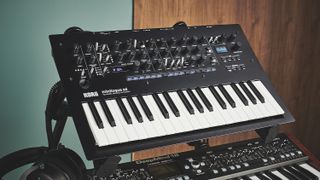
In recent years, hardware synths have grown immensely in popularity as people look to make music exterior of their DAW of choice. Hardware synths evangelize a easily-on arroyo to synthesis, combined with easy tweakability and groovy tones which provides the user with a much more tactile and rewarding feel. Whether you're looking for a pocket-sized instrument that can exist powered by batteries, or a module or keyboard, with whatever of the best cheap synthesizers in this guide you get a whole lot of instrument for your money.
You've got options when it comes to audio engines, too. You'll know yourself what's important to your sound, simply counterpart (or analog, if y'all adopt) is undoubtedly fashionable - and well-represented at the budget stop of the market. Digital synthesizers take a lot to offer, too, but in that location are great options in both camps. In some cases, you lot don't fifty-fifty accept to cull between the two, merely nosotros'll go to that.
Whether you're looking for your first beginner synth, or a sound designer looking to add something new to your arsenal, in that location's a upkeep synth out there to suit everyone.
We've included some practiced buying communication at the end of this guide, and so hit the 'buying advice' tab above if yous'd like to read more. If y'all'd rather get directly to the products, keep scrolling.
- Follow MusicRadar on Instagram to stay upwards to engagement with the latest gear news, creative person interviews and tech tutorials.
Best inexpensive synthesizers: MusicRadar's Choice
With a price indicate in a higher place £500/$500, it'southward arguable that the Korg Minilogue XD is pushing the boundaries of what can be considered a 'cheap' synthesizer. That said, in that location's no denying that it offers excellent value in terms of the sonic flexibility you get for your money. The original Minilogue already was - and, in fact, notwithstanding is - a very versatile counterpart synth.
By calculation a customisable digital oscillator and effects slot on peak of the original'south framework the XD takes things to the adjacent level, and has numberless more character too. If yous're afterwards one synth that tin can handle a diversity of duties - bass, pads, percussion, FX - then this is the way to go.
For synth beginners or adventurous minds, the Moog Werkstatt-01 is a compelling offering also. It comes unassembled, so there'due south fun to be had building it yourself, and in one case done it'southward a quirky, fun way to make some amazing sounds for not a lot of money.
Best cheap synthesizer: Production guide
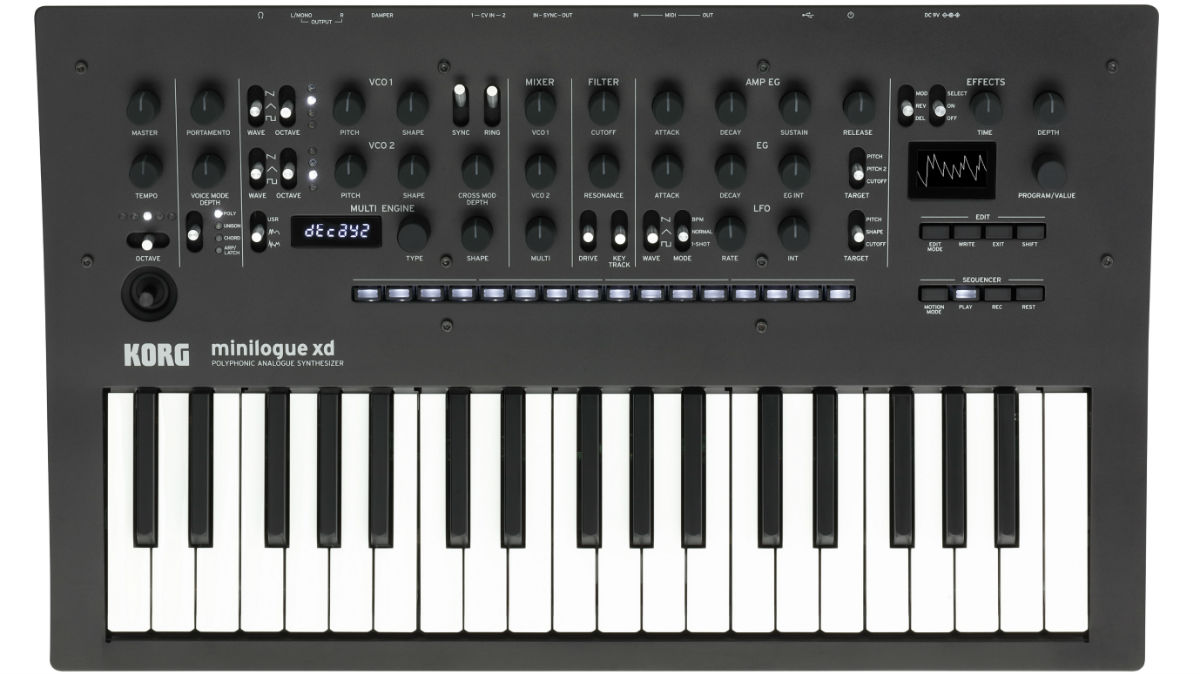
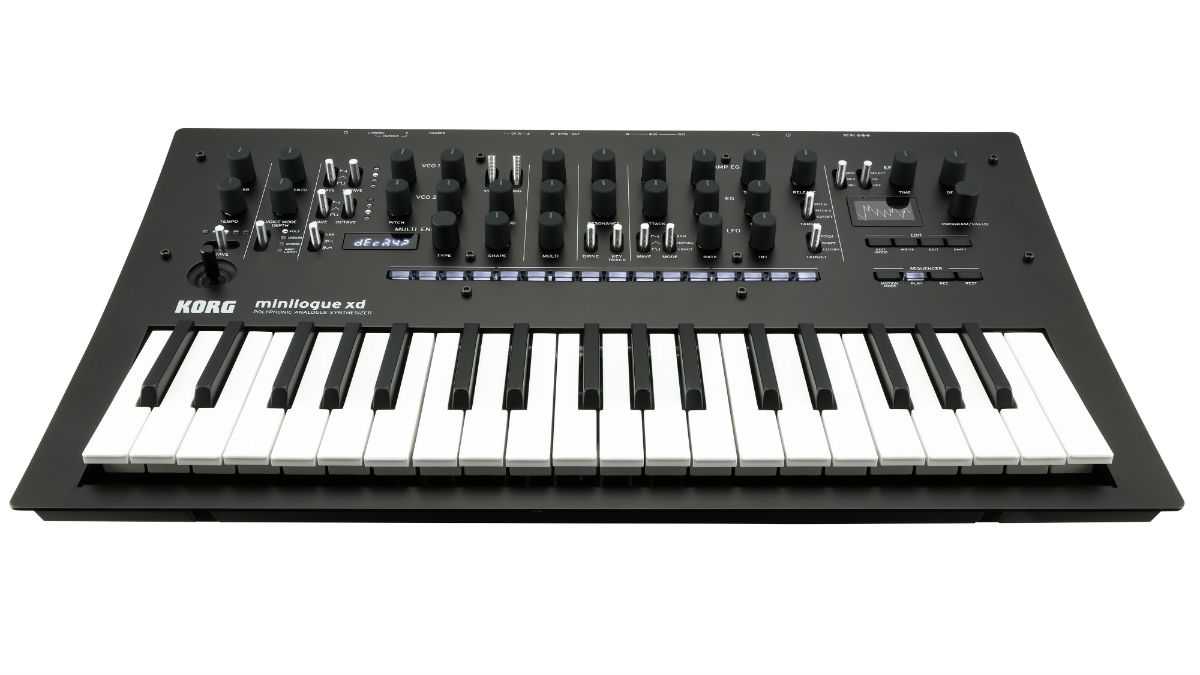
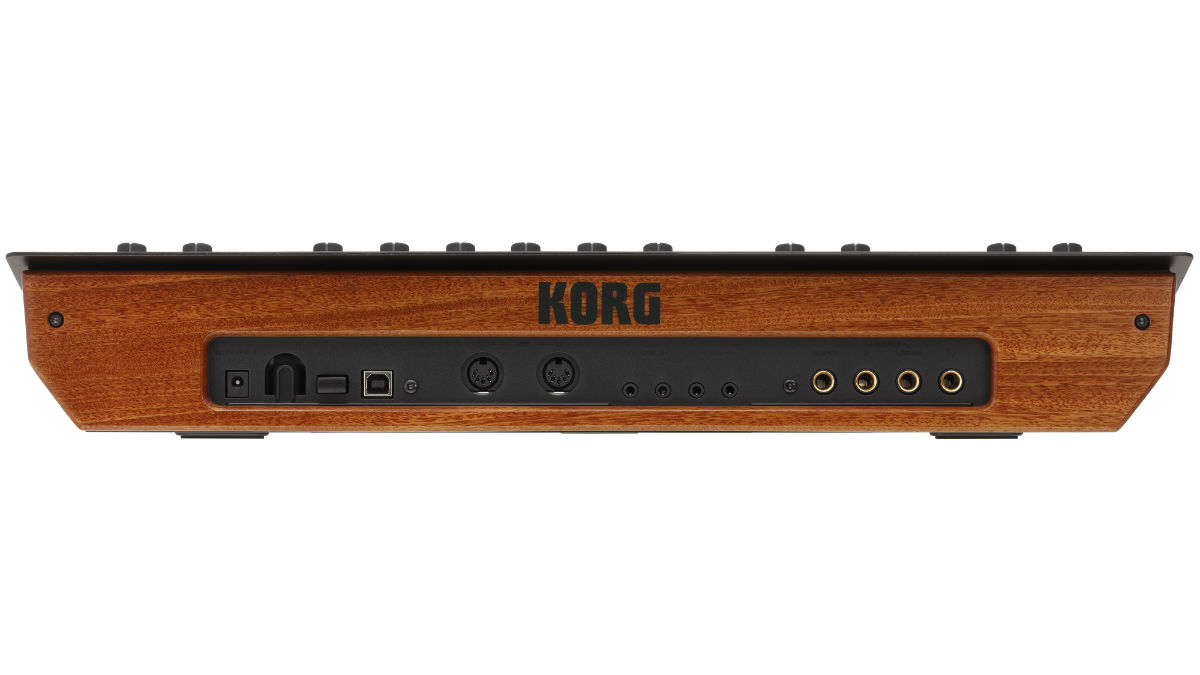
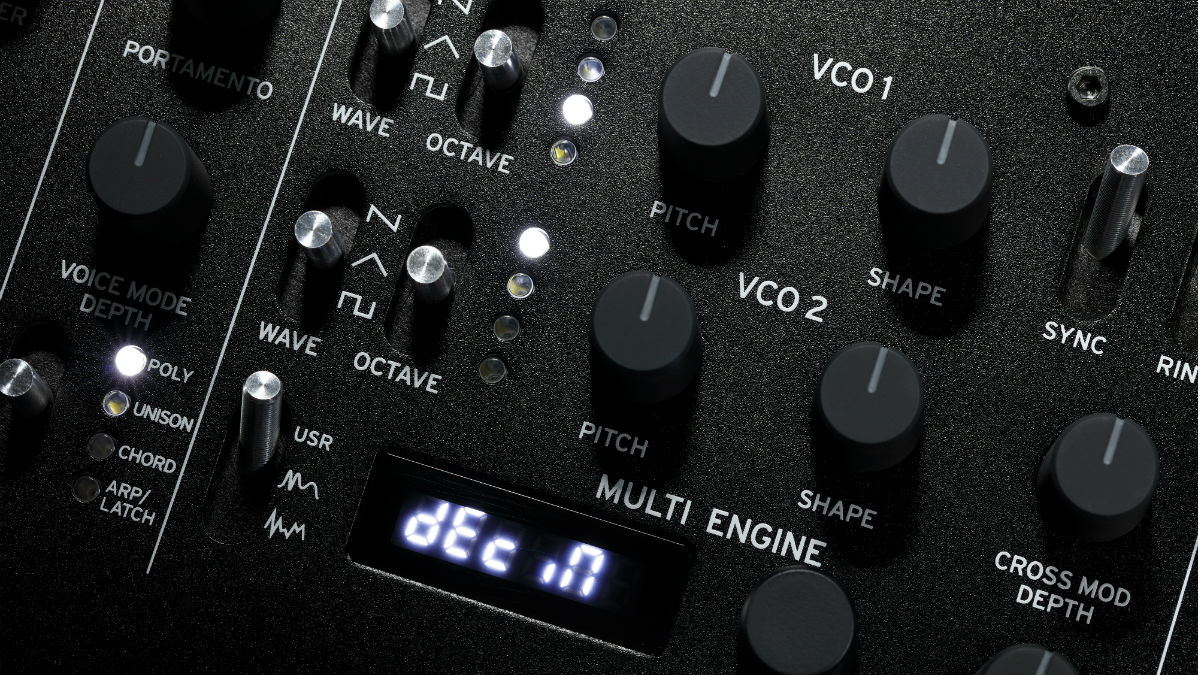
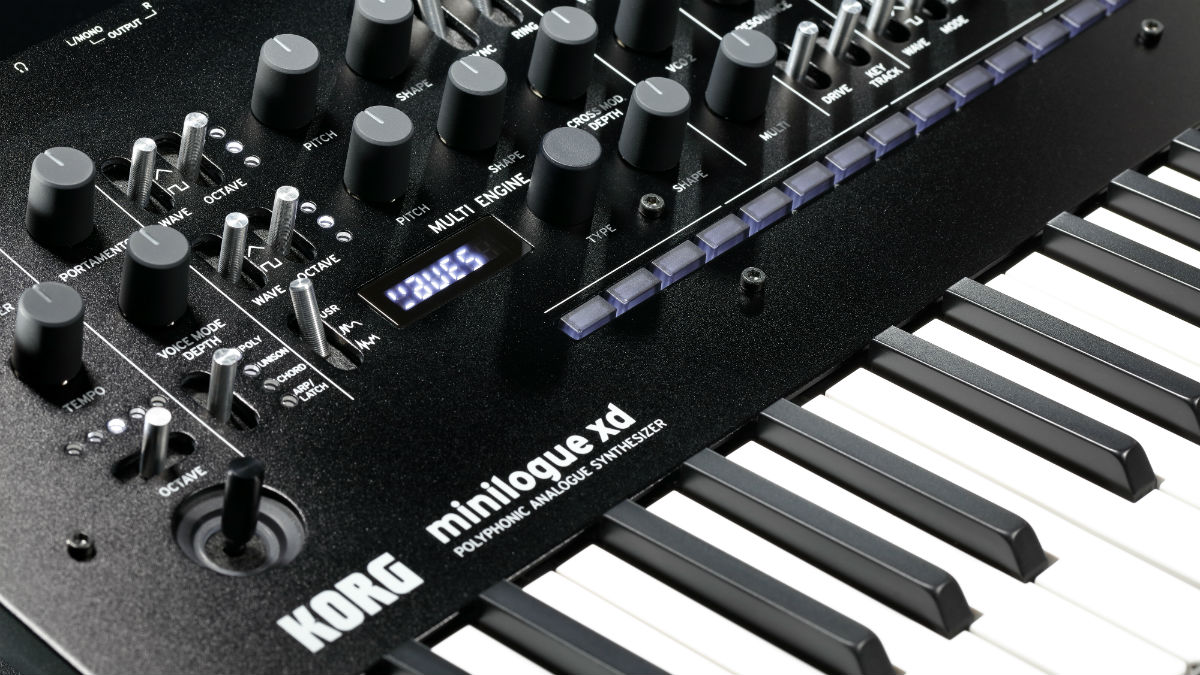
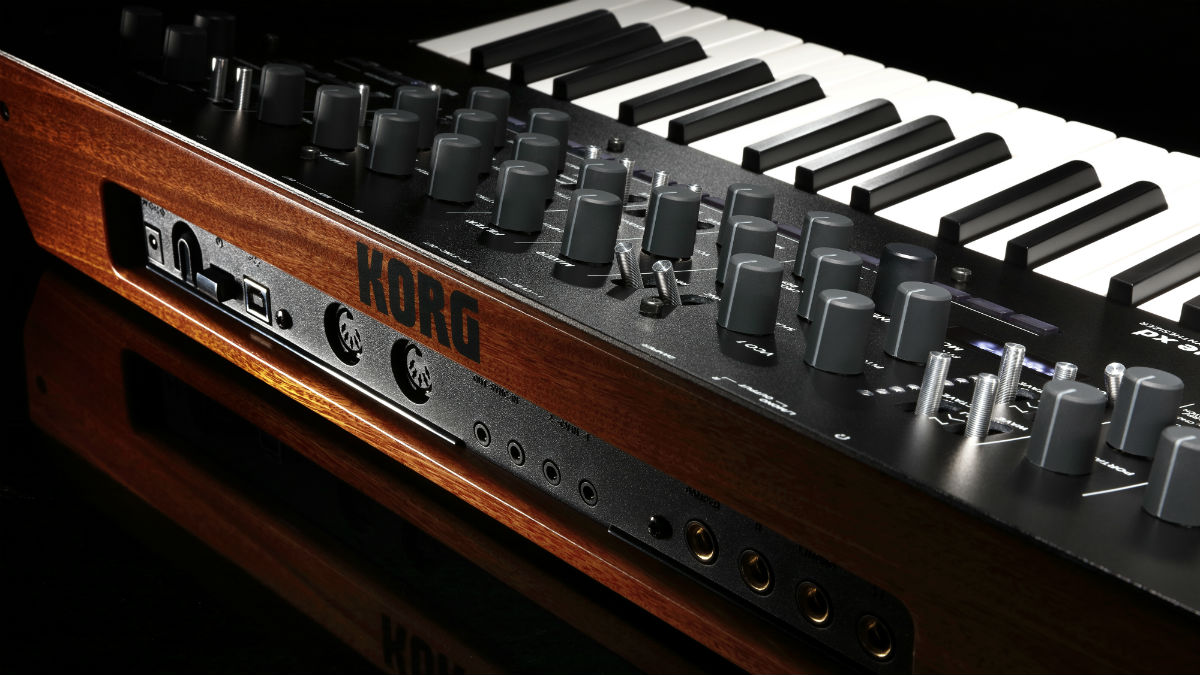
The original Minilogue is still a cracking buy, but if you can afford to spend a little more, we'd go for this pimped-up version that adds elements from the Monologue and Prologue synths every bit well. More versatile than the standard Minilogue, the XD offers a more powerful sequencer, greater versatility, a user-customisable digital Multi-Engine and effects, a joystick for real-time control, user scales/tunings and a vibe that's mostly more than inspiring.
The keys are of the 'slim' diverseness but still very playable, and the casing, which is made of metal with a wooden dorsum console, looks and feels bully. Despite taking inspiration from elsewhere, The XD has a unique personality and is a is a hugely welcome addition to the 'logue range as a whole.
Read full Korg Minilogue XD review
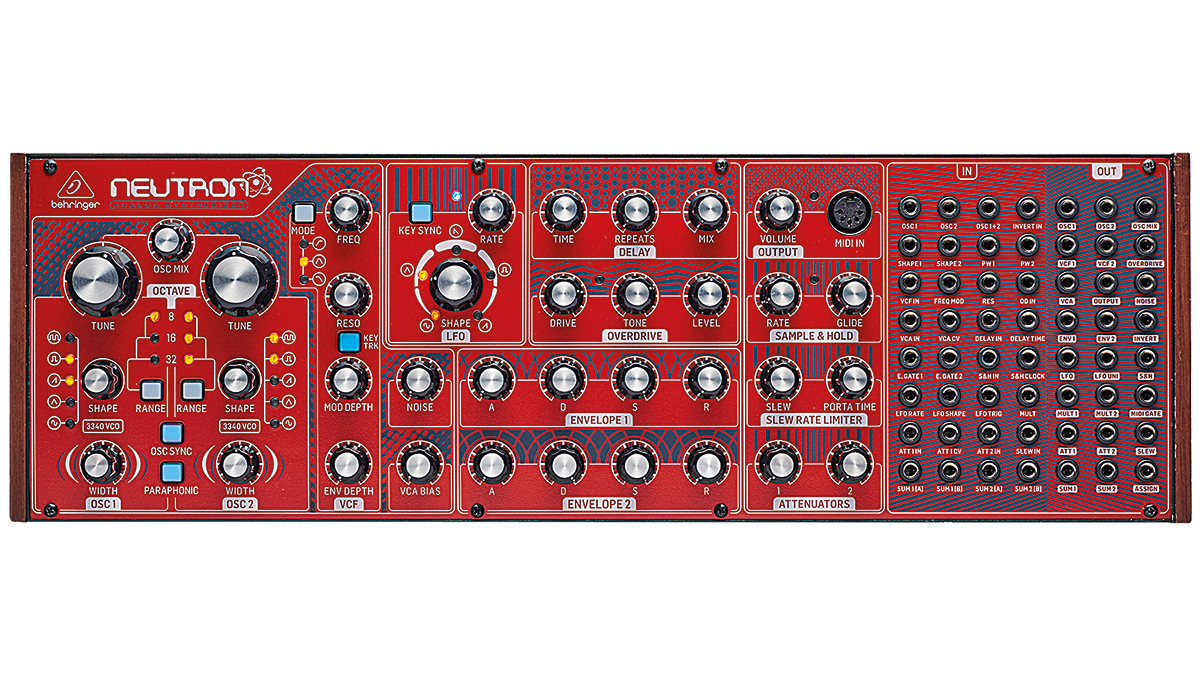
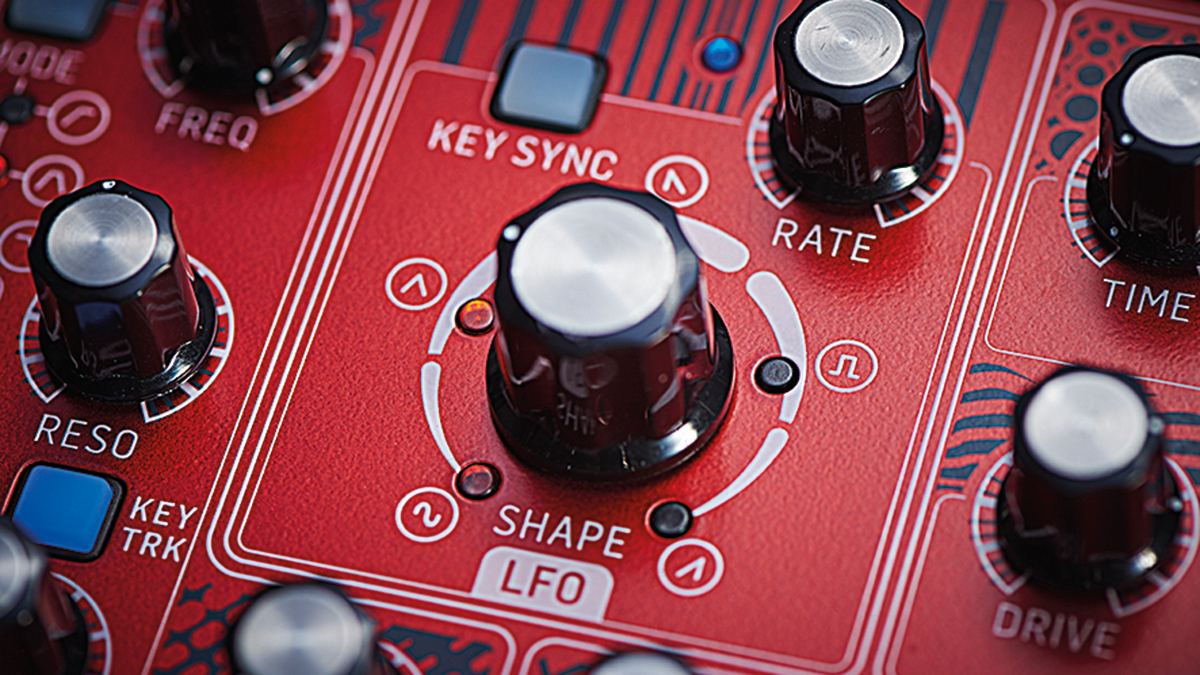

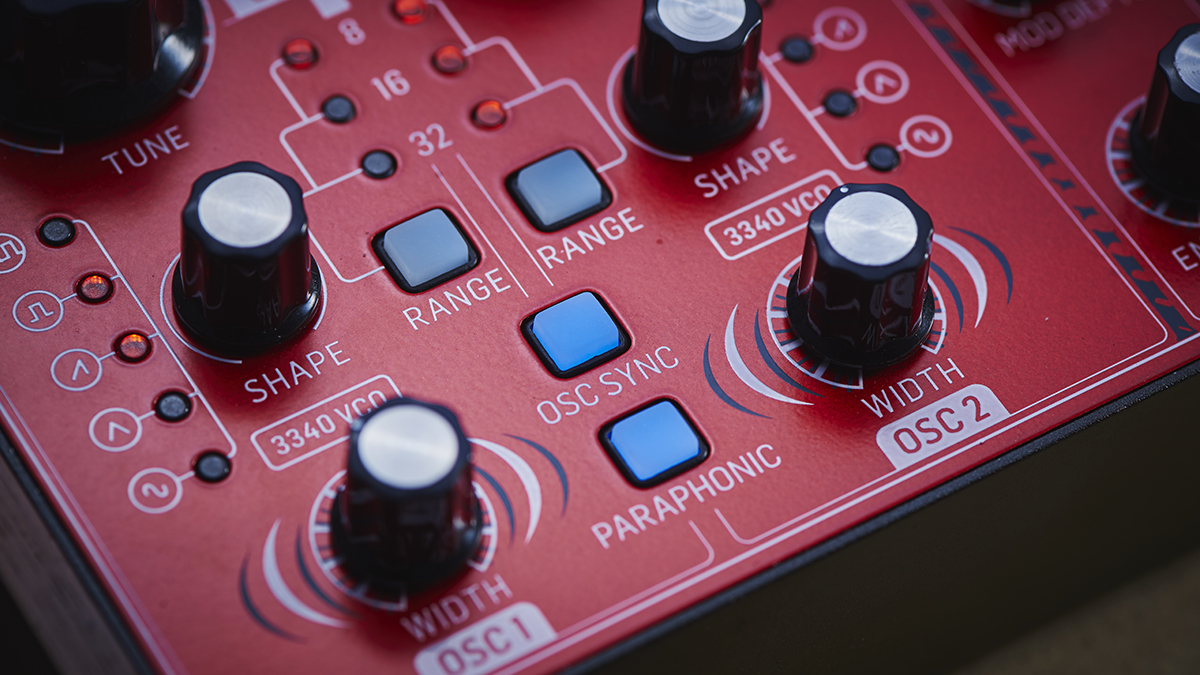
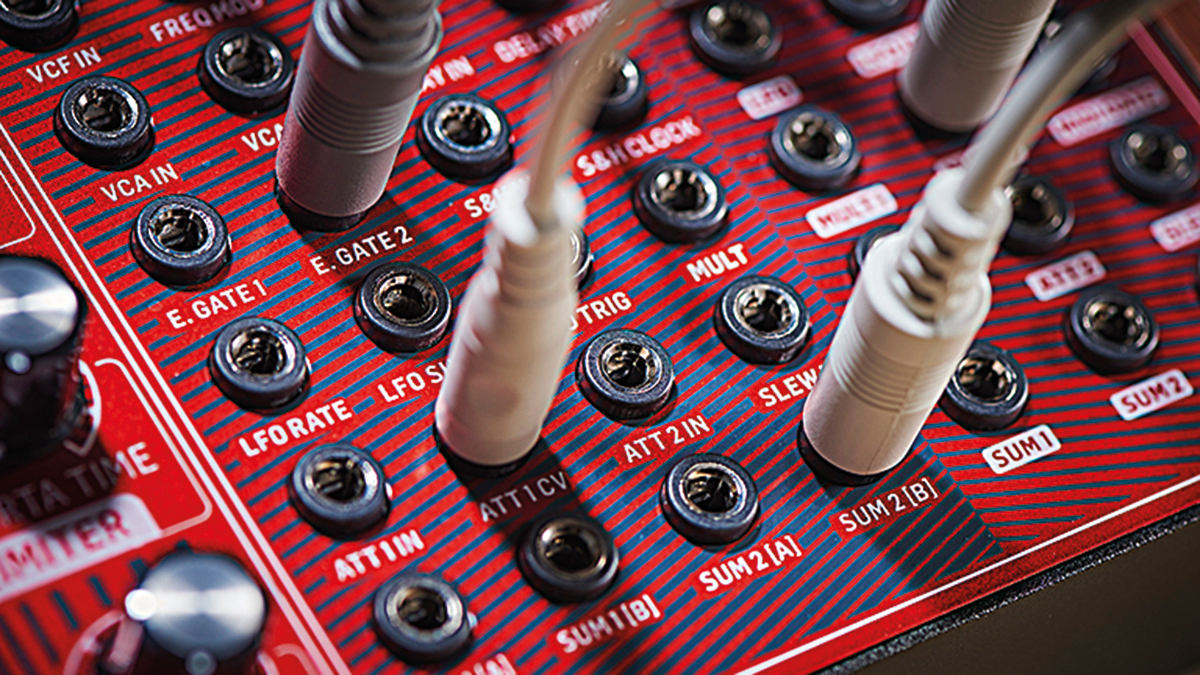
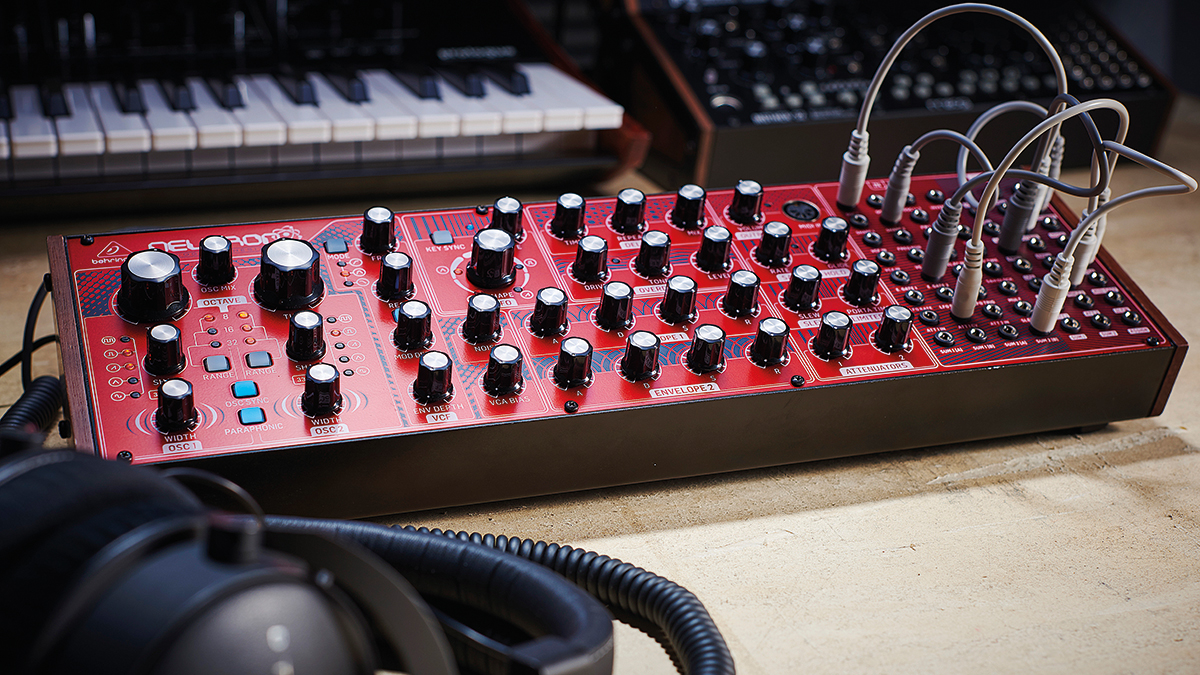
Behringer's synth arm might be best known for its controversy-courting 'tributes', but the High german make also has a couple of excellent original instruments under its belt. Following in the steps of final year'due south Deepmind, Neutron is an analogue semi-modular that packs in a lot of flexibility for its very affordable cost point.
The Neutron has a few flaws, and at that place are some frustrating design issues, but it does sound adept, and in terms of bang-for-your-buck, you can't really beat it. While it does a very good job of creating more than sensible sounds, information technology also excels at the weird and wonderful.
Read total Behringer Neutron review


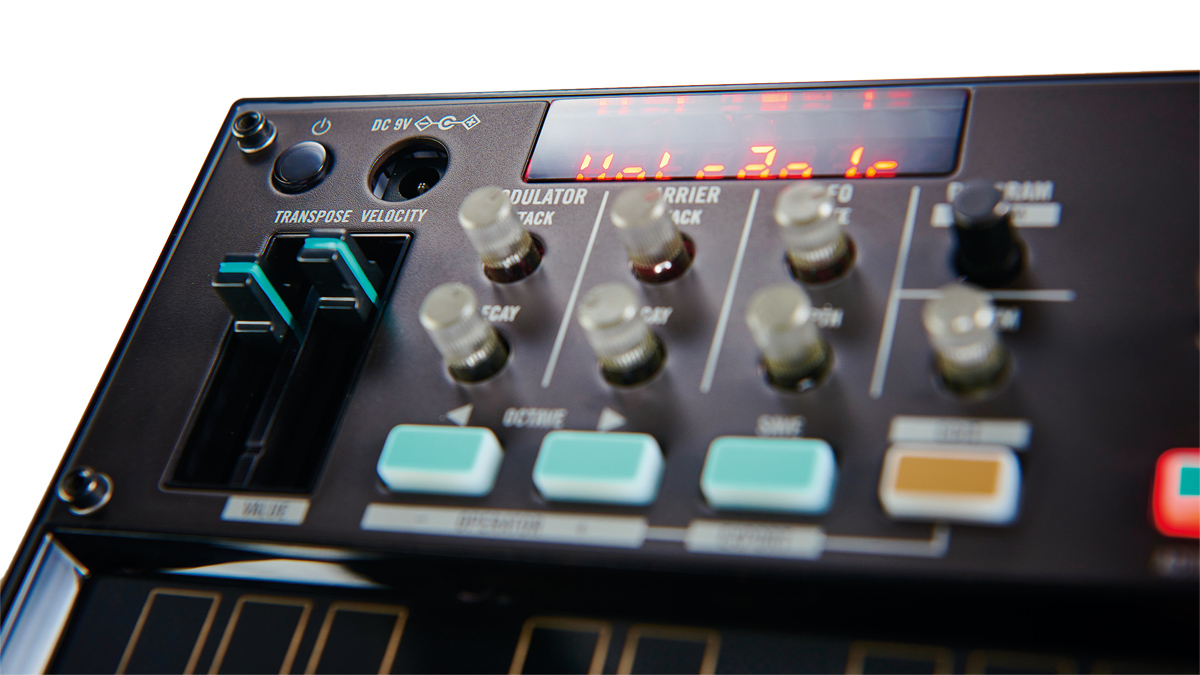
The Volca FM is a compact, bombardment-powerable musical instrument, housed in a plastic chassis with a design that gives a cheeky stylistic nod to the Yamaha DX7 from which information technology takes its sonic cues. It's equipped with a ribbon-manner keyboard-come-sequencer, built-in speaker, MIDI input and 3.5mm sync in/out.
This is easily the all-time of the Volca range so far. Where the other models have merely captured the general vibe of the instruments they took their inspiration from - albeit in a very fun and affordable way - the FM manages not only to nail the sound of its spiritual predecessor, but also adds an array of new and powerful features.
It'southward not without its limitations - the lack of polyphony leaves information technology lagging behind the original DX7, Yamaha'due south Reface DX, and the diverse FM plugins out in that location - merely the sound of those night, percussive basses, icy mallets and '80s-style horns is blindside on, and if y'all start to push the capabilities of this tweakable, hands-on picayune synth, yous'll find it's capable of some truly unique tricks.
Read full Korg Volca FM review


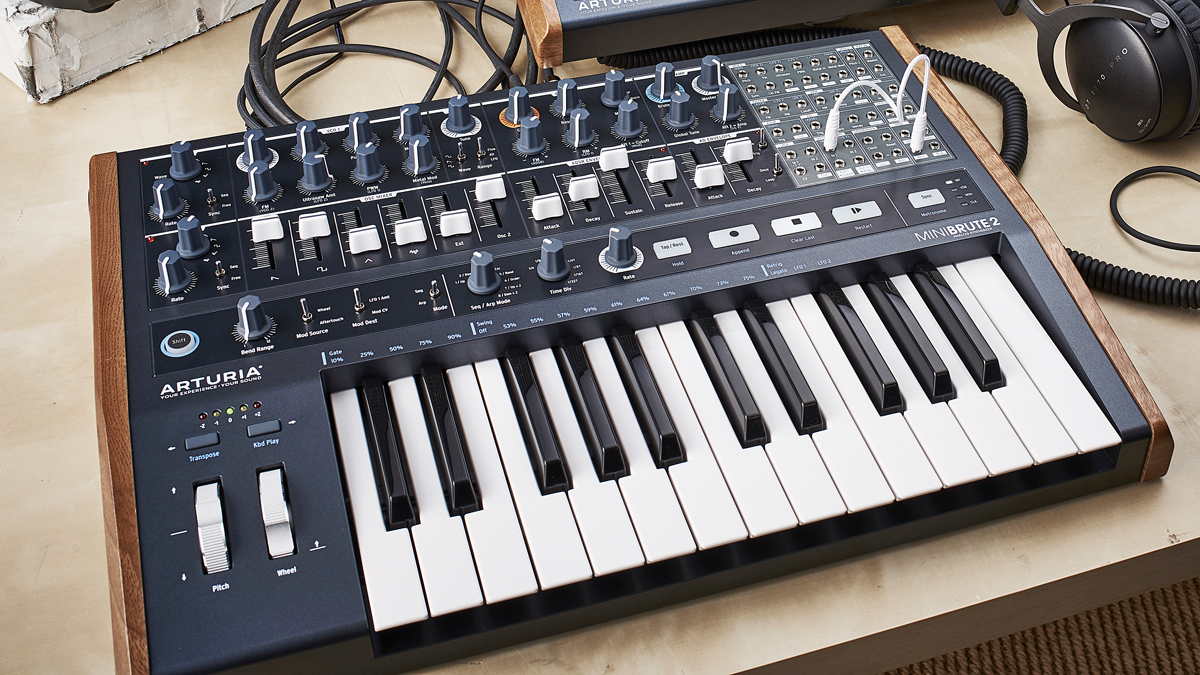
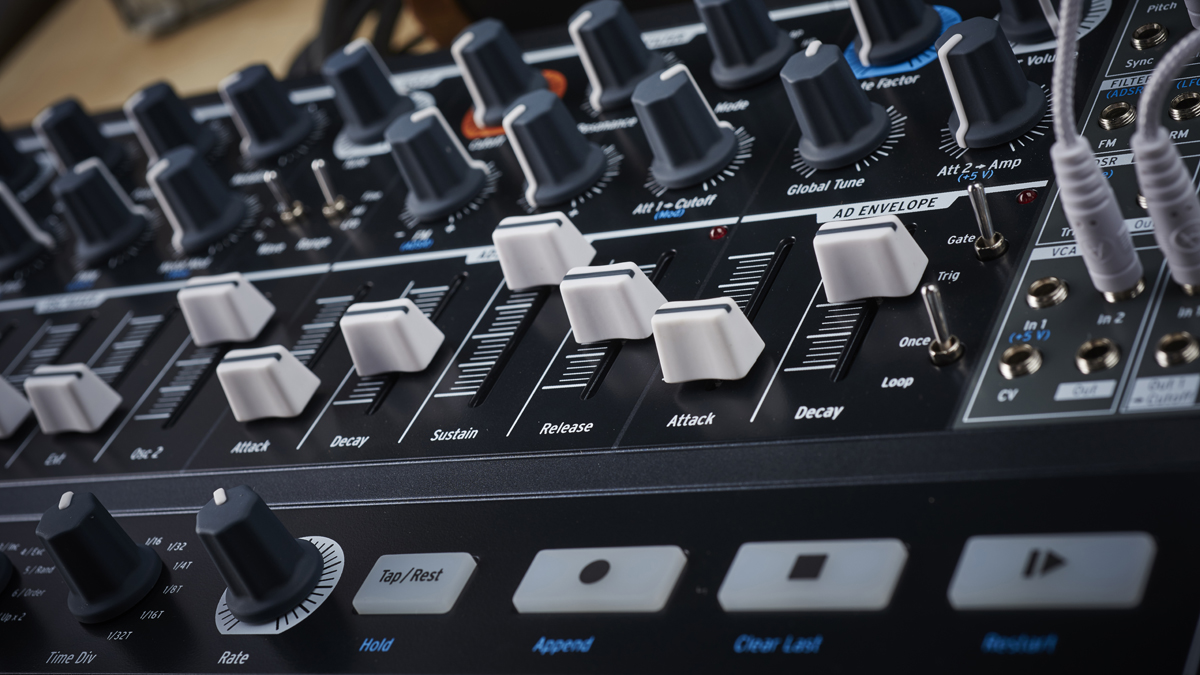
Where the original was a fairly straightforward monosynth with a few unique touches and some CV control, the MiniBrute 2 is semi-modular, boasting a beefed- up synth engine and a comprehensive mini-jack patchbay. As before, the master oscillator tin generate saw, triangle and square waves simultaneously, the outputs of which are composite via the oscillator mixer, where they're joined past a white noise source and external audio input.
Filter-wise, the MiniBrute ii keeps the Steiner-Parker-way filter of its predecessor, which offers -12dB depression- and high-laissez passer modes, plus -6dB band-pass and notch filtering. On the whole, the MiniBrute 2 is a existent success. It takes everything we liked about the original - the analogue grit, interesting oscillator shaping and Brute factor control, which overdrives the signal chain using a controlled feedback loop - and expands on it considerably. A serious competitor, so, and the same can be said of the MiniBrute 2S, which swaps the keys for a pad-based step sequencer.
Read full Arturia MiniBrute two review

Originally conceived as a gift for attendees at a Moog upshot in 2014, the Werkstatt-01 proved so pop it has now received its own launch and is giving synth fans the chance to add together a genuine Moog to their armory for under £/$200/€219. For that you become a 100 percent analog monophonic synth with archetype Moog filter, modulation and even a mini patch bay so you can experiment with modular synthesis or connect the Werkstatt up to a larger Eurorack system.
There are plenty of options in this guide with more in the mode of features and functionality, but as a fun, inventive mode of experimenting with modular synthesis the Werkstatt represents great value. You even become to build it yourself out of the box!
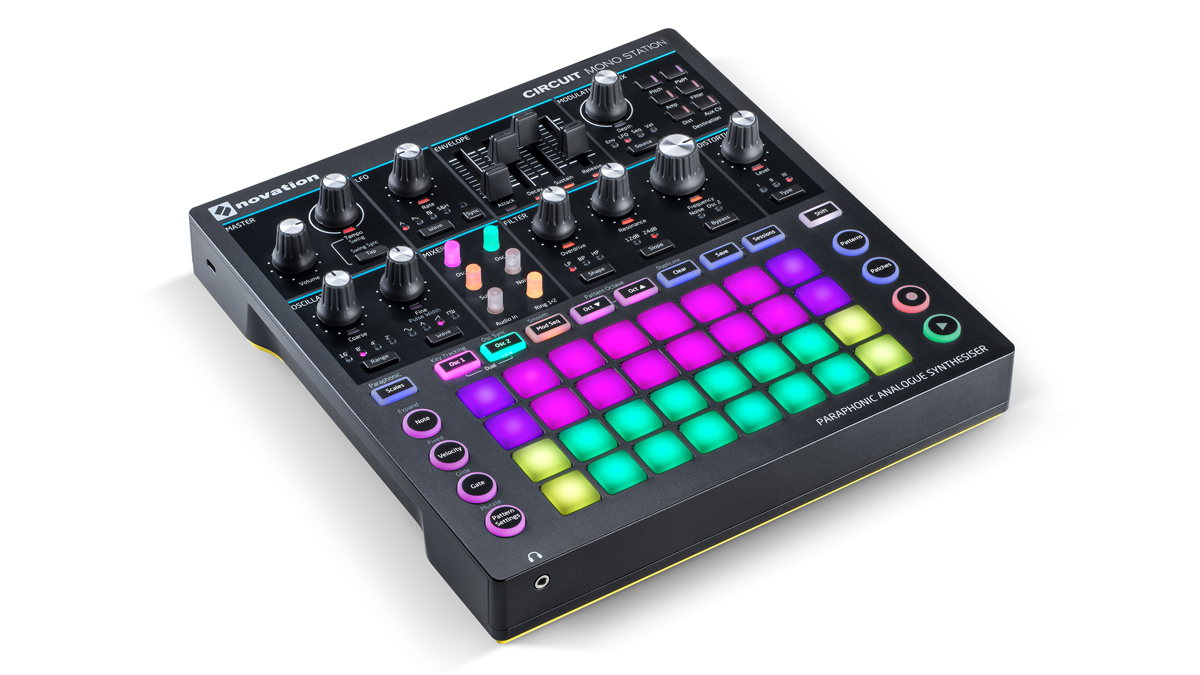


Circuit Mono Station is, in loose terms, a hybrid of two of Novation'due south best instruments: a combination of the meaty counterpart synth engine of the Bass Station Two, and Circuit's excellent sequencer. Housed in a chassis similar to - merely slightly taller than - Circuit, Mono Station'southward interface is roughly divided in one-half, with the upper section housing the synth controls and the lower portion controlling the sequencer.
Mono Station is equipped with a decent assortment of ins and outs, while the deep, multi-aqueduct sequencer, flexible mod matrix and automation all add up to a workflow and creative experience dissimilar anything else on the market place, combining the all-time of digital flexibility with a classic analogue synth blueprint. The end upshot is much more than than the sum of its parts, and at this cost point this is a must-try synth.
Read total Novation Circuit Mono Station review
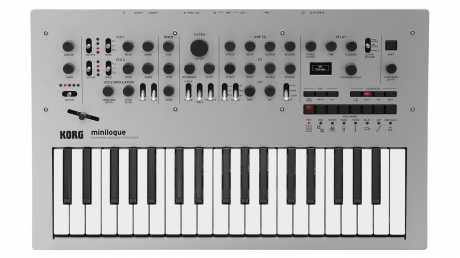
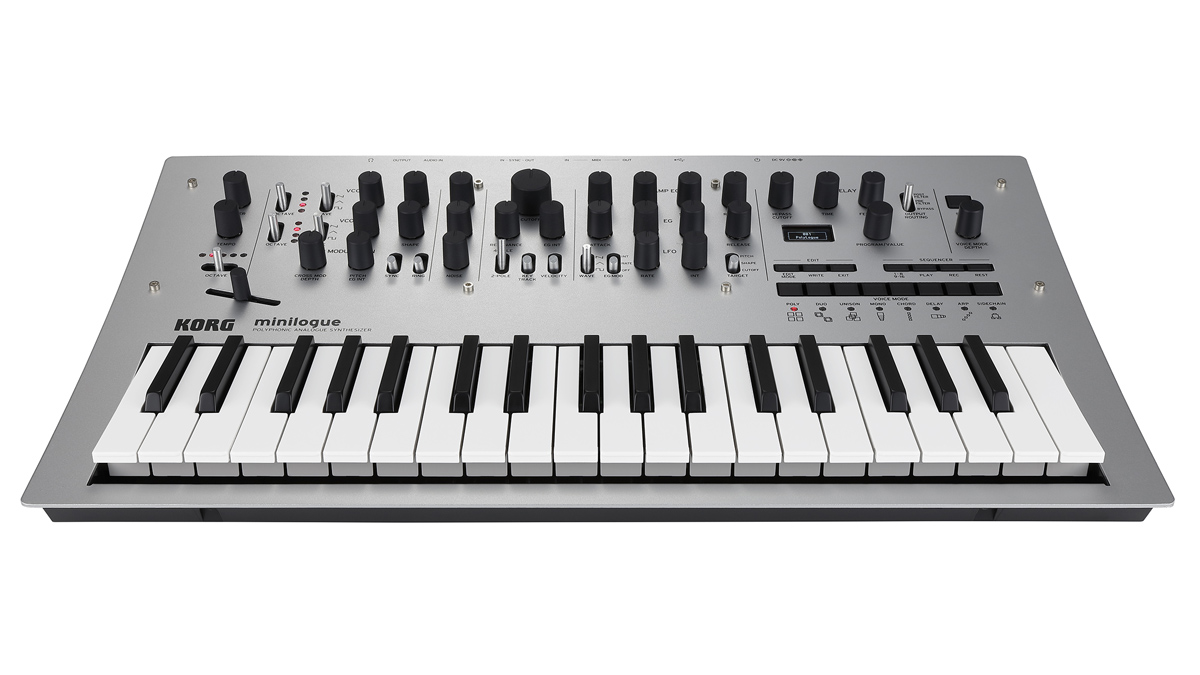
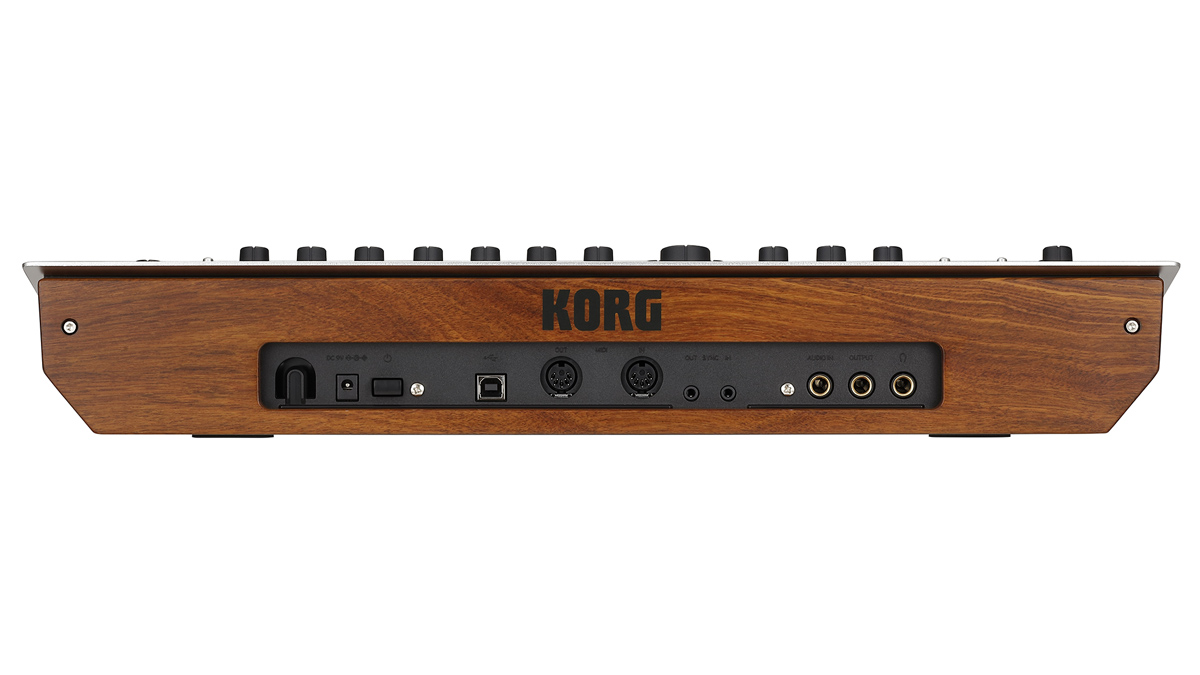


The Minilogue is what a lot of people accept been waiting for: a 4-vocalisation analogue polysynth priced at less than £500. The Minilogue'due south architecture is actually versatile, which makes it stand out even confronting pricier competitors. The Minilogue mostly produces a very loftier-quality sound, though it'll do muddy/hissy when you really crank the levels through the mixer, push the delay or use the cross mod/sync and band mod.
At that place's a flexible filter, snappy envelopes, a 16-step polyphonic sequencer, an arpeggiator, an audio input for processing external audio, a very tape-like filibuster, plus patch storage and MIDI. You have to keep reminding yourself how reasonably-priced the Minilogue is and just how much goodness it packs into its compact form factor. We tin can't think of another analogue synth at a similar price point that offers more than.
Read full Korg Minilogue review
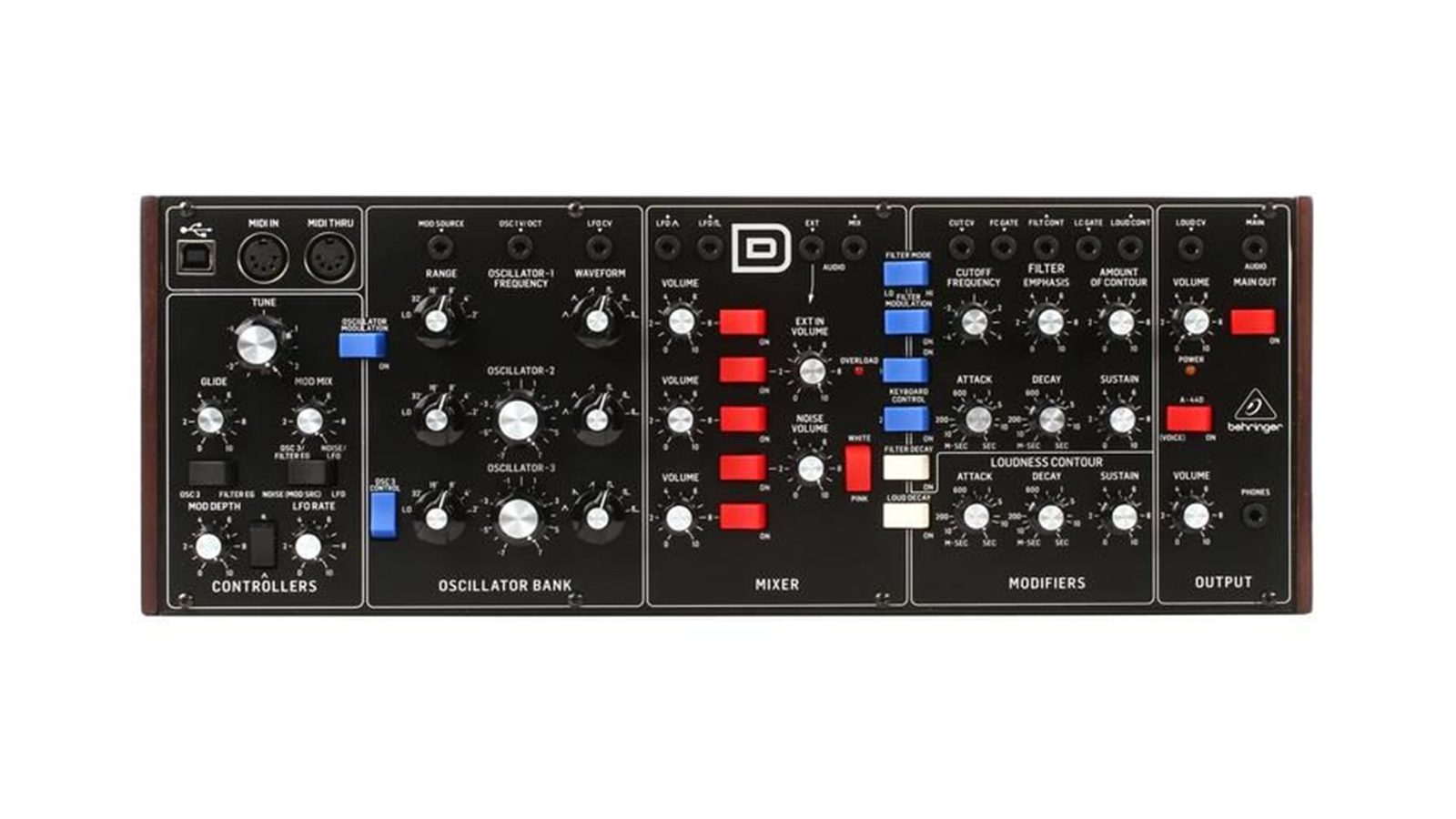
Every bit one of the commencement 'homage' models off the Behringer photocopier, the Model D introduced a new generation of synth fans to the archetype Minimoog audio while also calculation in a few nifty tricks of its own. Essentially, you go three oscillators, each with a variety of waveforms, a 24 dB ladder filter and bones modulation which makes for a rather first-class combination. We constitute the Model D equally good at thick bass sounds, 80's mode pads and all kinds of experimental sonic mayhem.
We like the way Model D tin can be removed from its casing and installed in a Eurorack modular setup besides, which makes use of the patch points beyond the top of the unit. It's also good to see a variety of connectivity options, including MIDI in and thru, and USB for sending notation information from a DAW. There'due south a lot to similar here, and for non a lot of cash either.

There are several impressive synths in Korg's meaty Volca range all of which boast sounds and feature that punch well in a higher place their sub-£200 toll point. Of the whole range though, the Volca Modular is certainly the most unique and interesting.
This patchable counterpart synth takes its cues from 'West Coast' synthesizers such as those created past Buchla and Serge. These instruments eschew 'traditional' subtractive synthesis elements in favour of more esoteric features such as oscillators based around sound-rate modulation and random modulators.
Considering of this, the Modular is the weirdest, and most niche instrument in the Volca range – it's all-time for experimental sounds and unusual effects, meaning information technology won't suit everyone. Nonetheless, if you're after something a bit unlike to add together to your electric current setup, this is a great pick.
Read the full Korg Volca Modular review

The JU-06A is an update to one of Roland's original Boutique synths, the Juno-106-inspired JU-06. Like its predecessor, this latest synth uses digital Analog Circuit Behavior applied science to replicate the components of the original Juno, and does an first-class job of capturing the feel and sound of Roland'south archetype counterpart poly (albeit with a phonation count reduced from half-dozen to four).
The difference here is that the 'A' adds multiple elements of the Juno-sixty into the mix too, including that synth's well-regarded arpeggiator and a switch engaging the threescore's punchier, more than percussive filter and envelope behaviour. The upshot is an altogether more than versatile and impressive synth – the 2 modes add to the sonic flexibility considerably, and pairing the arp, chord mode and mono sequencer makes this a killer tool for classic Chicago and Detroit-way social club sounds.
Read the total Roland JU-06A review
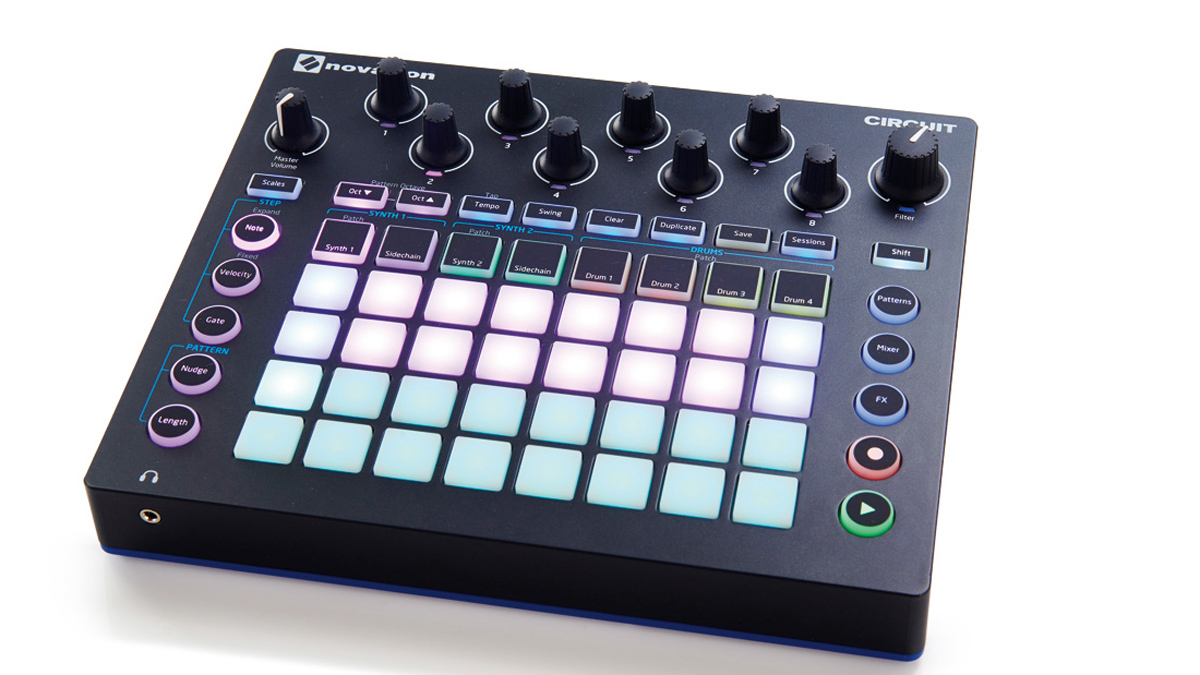
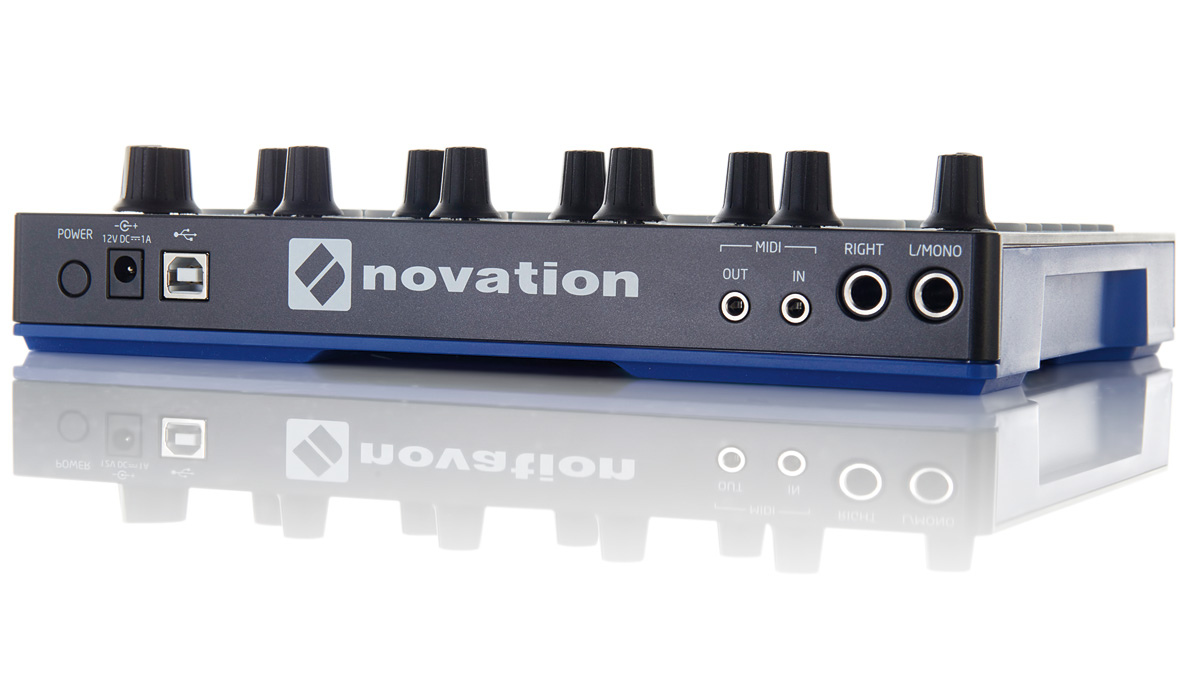

Circuit is a standalone, digital instrument featuring a four-function pulsate machine, two six-annotation polyphonic synths and a deceptively deep sequencer. In the words of Novation, Circuit is "designed to inspire", with a heavy emphasis on immediacy, intuitiveness and experimentation. The device takes almost of its design cues from the Launchpad Pro controller.
Its chassis features the same combination of matt-blackness top, rounded corners and rubberised base, while its central sequencer grid is built from slightly smaller versions of the Launchpad's backlit, velocity-sensitive pads. You'll demand to browse the transmission to get the hang of a few shift functions, but beyond that, Circuit is an absolute joy to etch and experiment with. It has a broad, quality sound palette, an inspiring workflow and a sequencer that bests those in instruments 4 times its price.
Read full Novation Excursion review
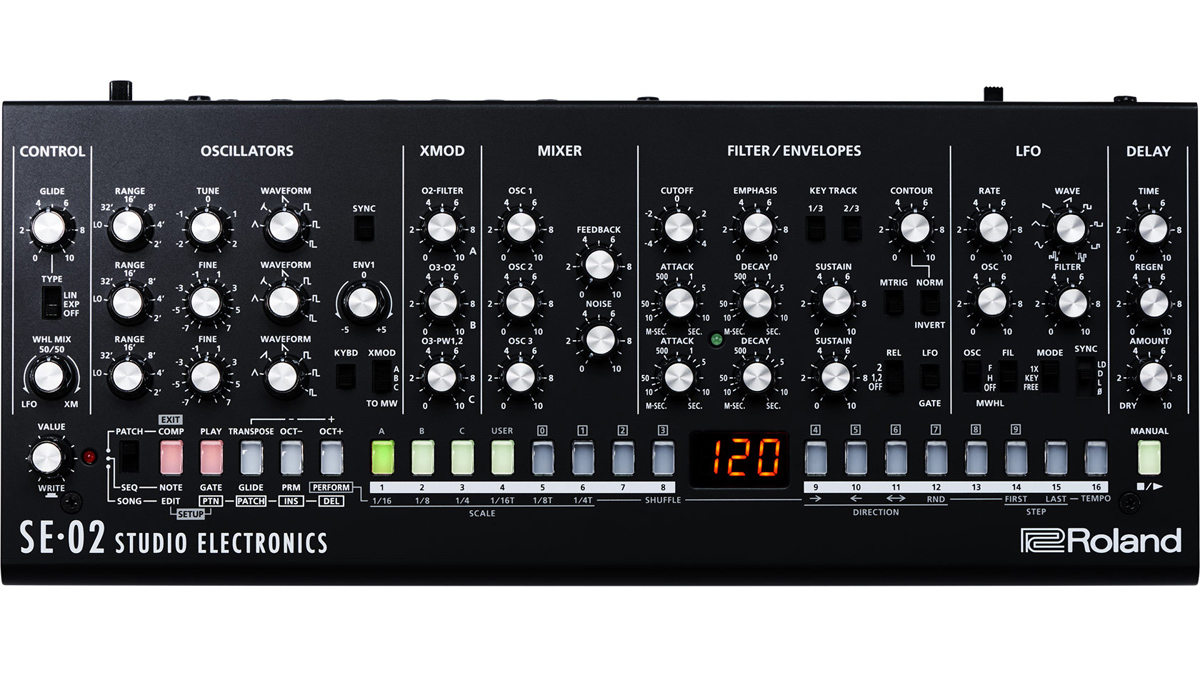



The only analogue instrument in Roland's Boutique line-up, the SE-02 was created in collaboration with Studio Electronics, which is responsible for - amid many other things - the Tonestar and Boomstar instruments. It features three VCOs, a voltage-controlled 24dB low-laissez passer filter, and a dual proceeds-stage amplifier. The oscillators have six different waveforms, which promise the "warmth and complex character" that you'd hope for.
Because there's also a nicely-featured sequencer onboard, the SE-02 is a very impressive piece of kit for the price. Sonically, it'due south loftier-quality, and can exercise everything from warm and smooth to harsh and aggressive. Information technology's a bit Rolandy and a scrap Moogy/SE-ish… only then with all the versatile modulation and shaping onboard it has its ain vibe, too, and it's hard to brand it sound bad. Recommended for anyone who wants a great-sounding, portable and versatile monosynth for the studio and stage.
Read the full Roland SE-02 review
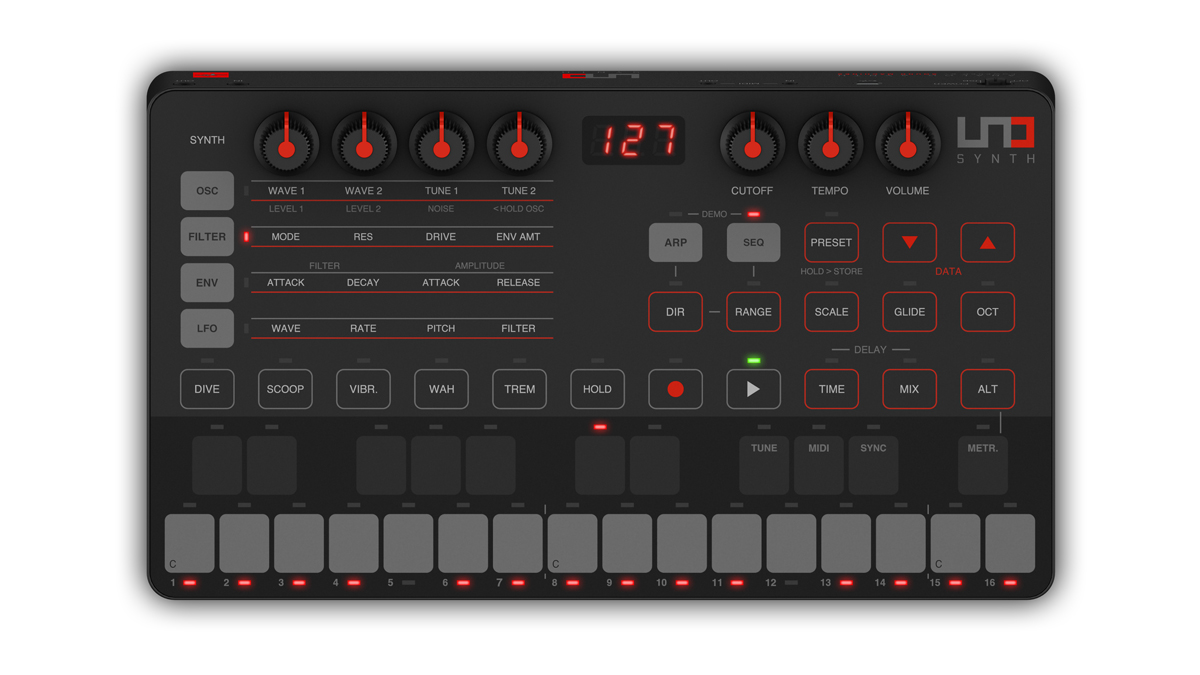
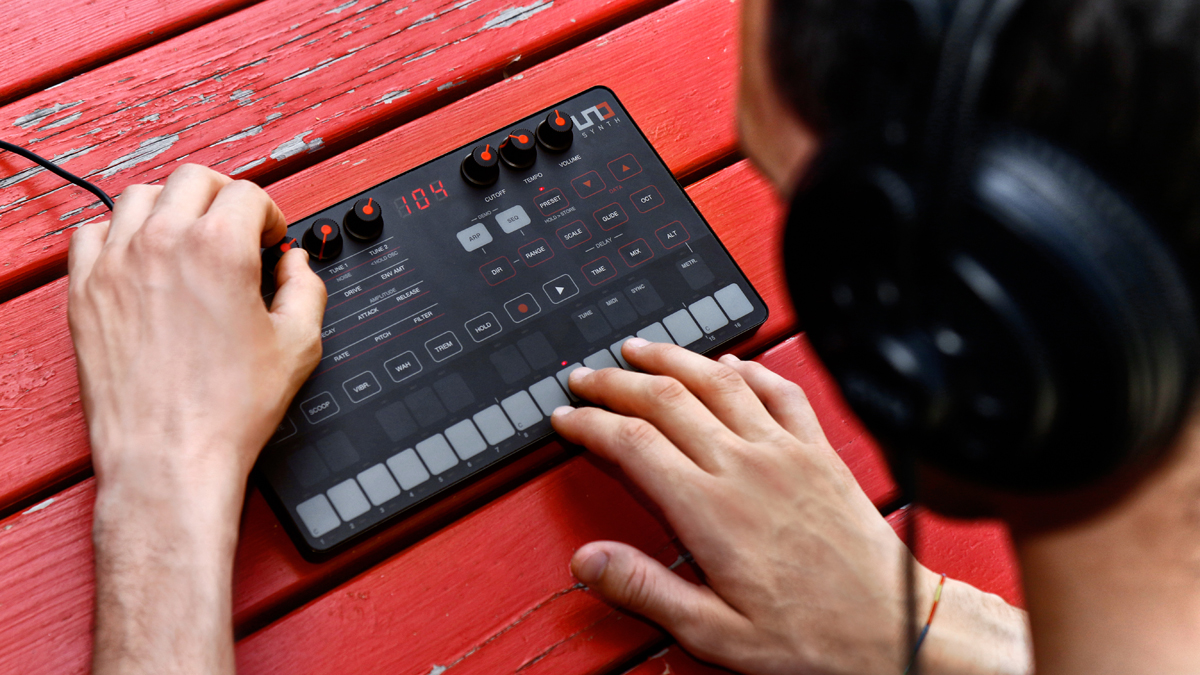
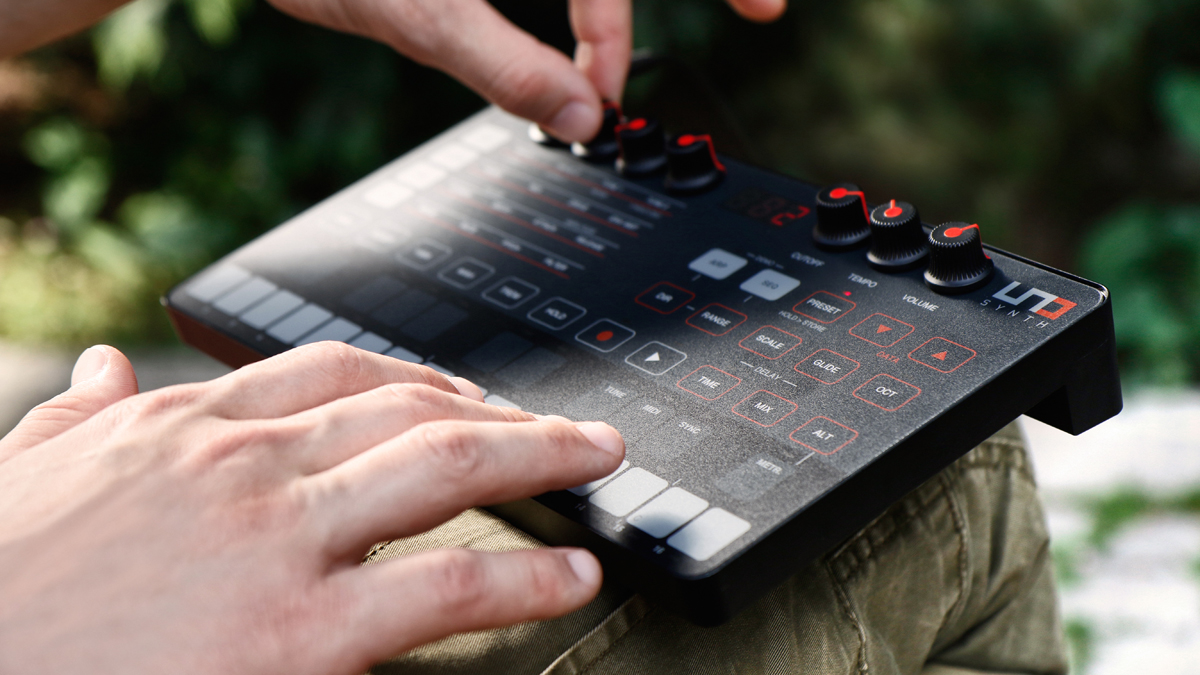
The look of UNO may prove a bit divisive. Its slanted profile and push button control panel have a retro charm, but it'south a design that brings to mind the early on days of home computers more than any vintage counterpart synth. The lower office of the push button interface is taken up past a 27-notation 'keyboard' for alive playing, or to input notes for the onboard sequencer or arpeggiator.
Despite all of this, UNO is an excellent-sounding, versatile analogue monosynth, and you do become a lot for your coin. The presets offering a ton of highly usable sounds, and we could certainly see this becoming a go-to musical instrument for archetype basses and leads. The arp and sequencer are great for inspiring ideas, and a software editor adds to the attraction. if you lot tin cope with a few compromises, UNO is a great source of classic, punchy analogue sounds at a bargain price.
Read full IK Multimedia UNO Synth review
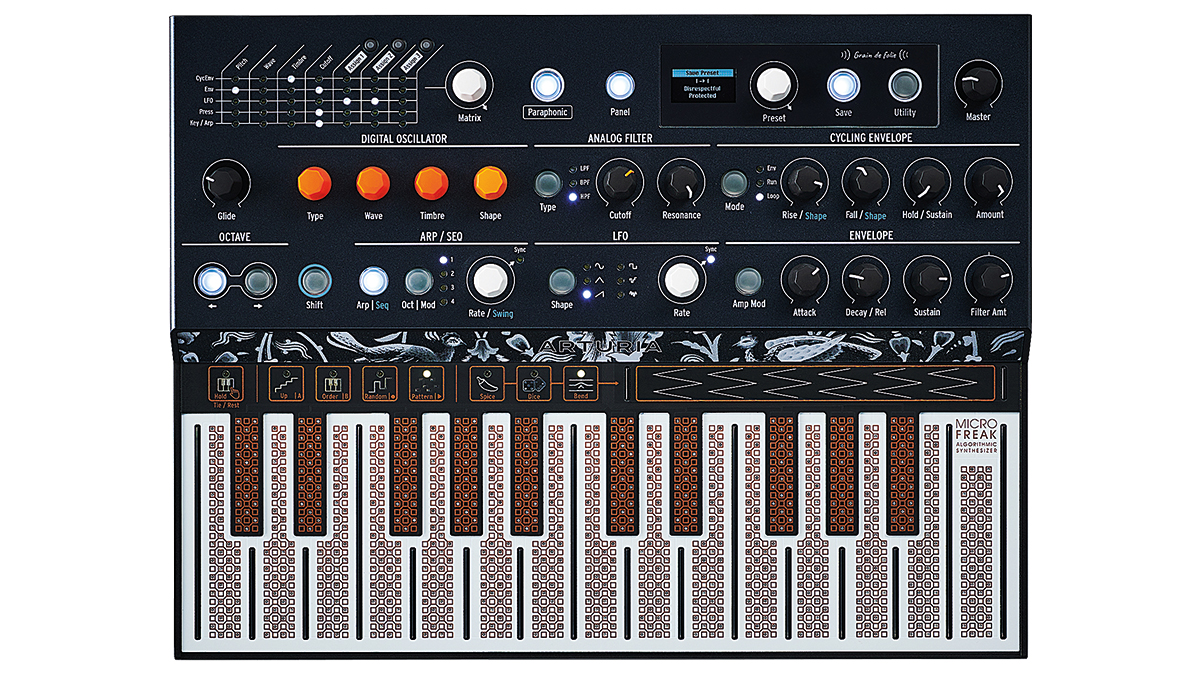
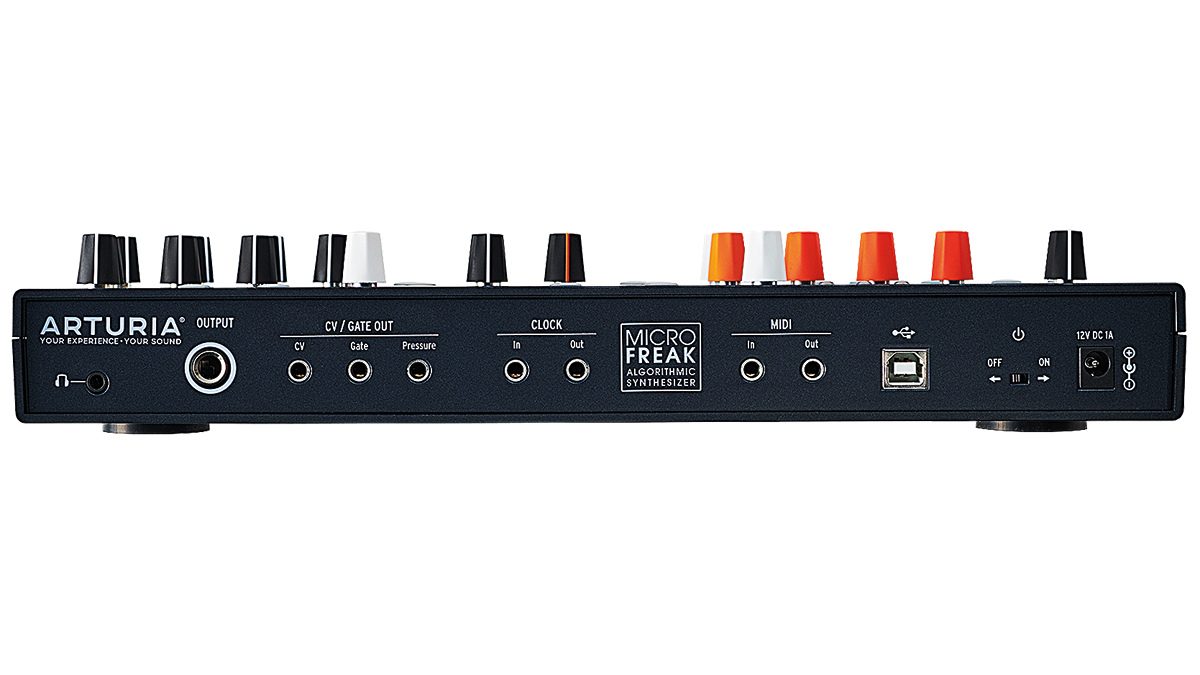
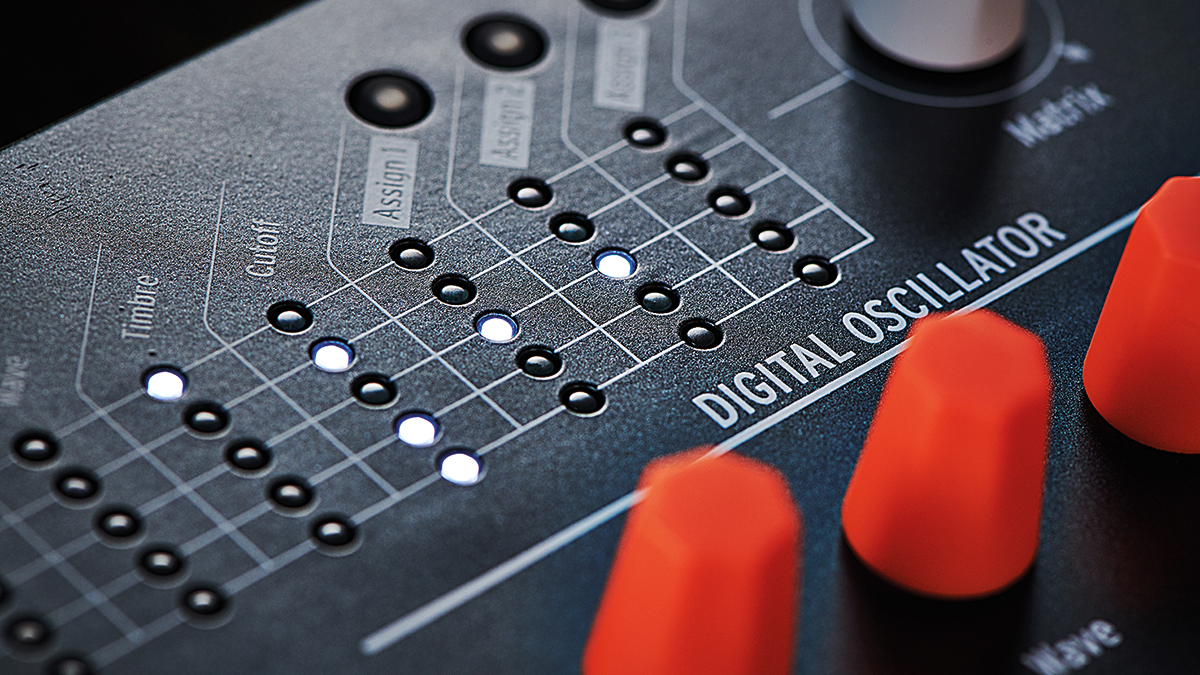

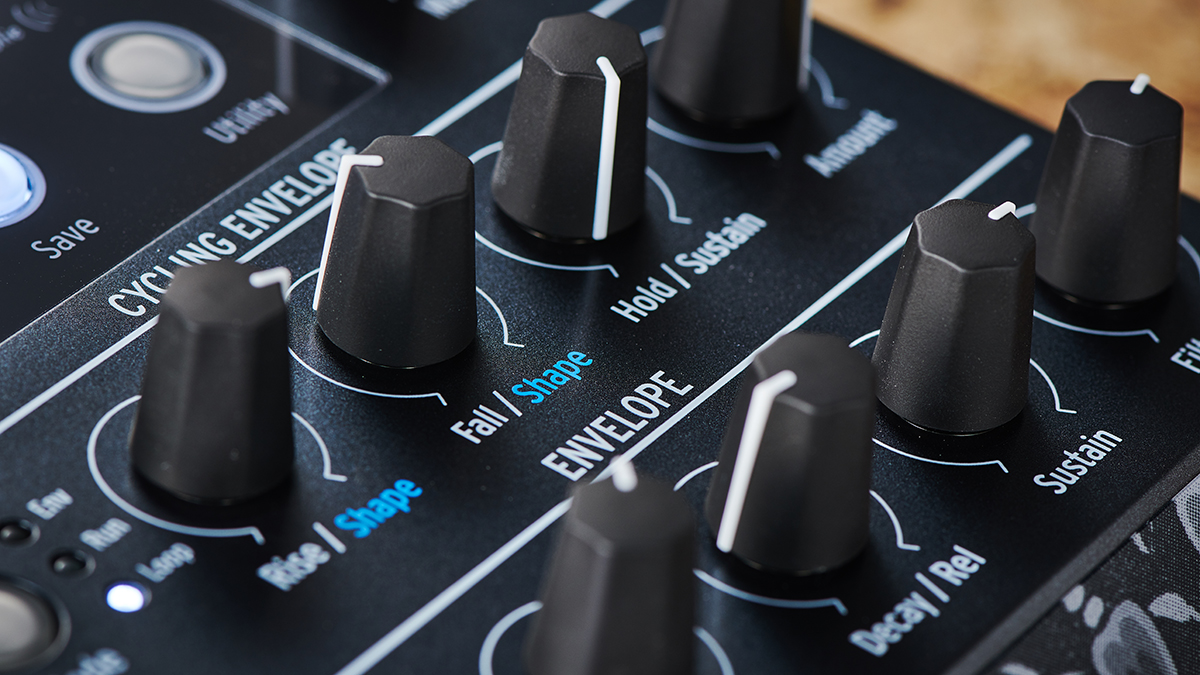
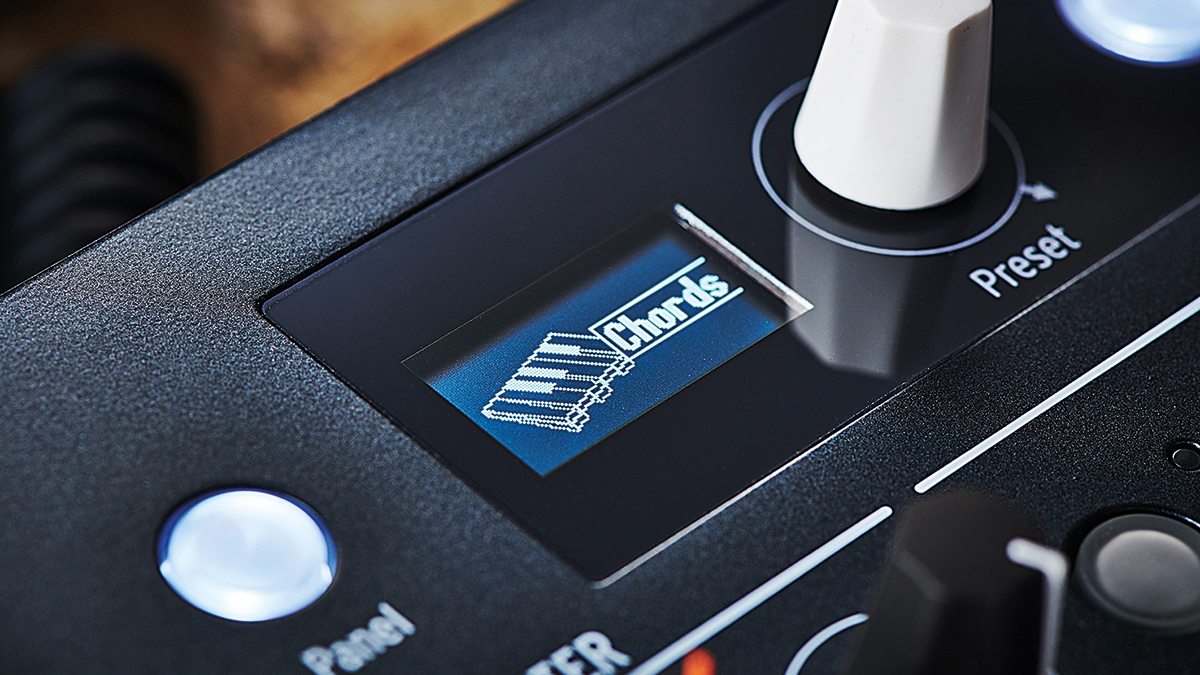
Out of the box, MicroFreak's unique stylings immediately grab your attention. It'due south a bold look - but we like adventurous design choices. With so many synthesis features packed into such a modest box, it's hard not to autumn in love with Arturia's quirky and affordable hardware offer.
The multiple oscillator modes cover a nearly-countless range of timbres; the filter is shine and versatile; the Matrix invites exploratory modulation; and the operation and sequencing tools are the icing on the creative cake. However, the real magic lies in the combo of all these together, making this odd little animate being far more than the sum of its parts. MicroFreak should be top of your 'must attempt' list.
Read full Arturia MicroFreak review


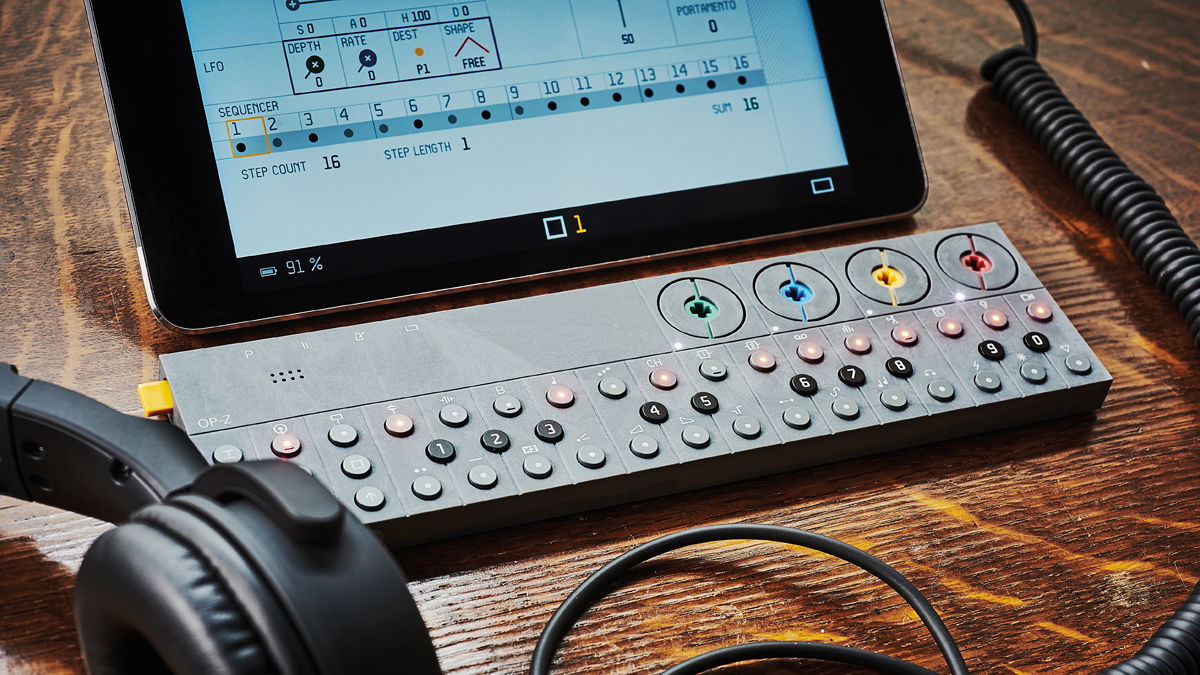
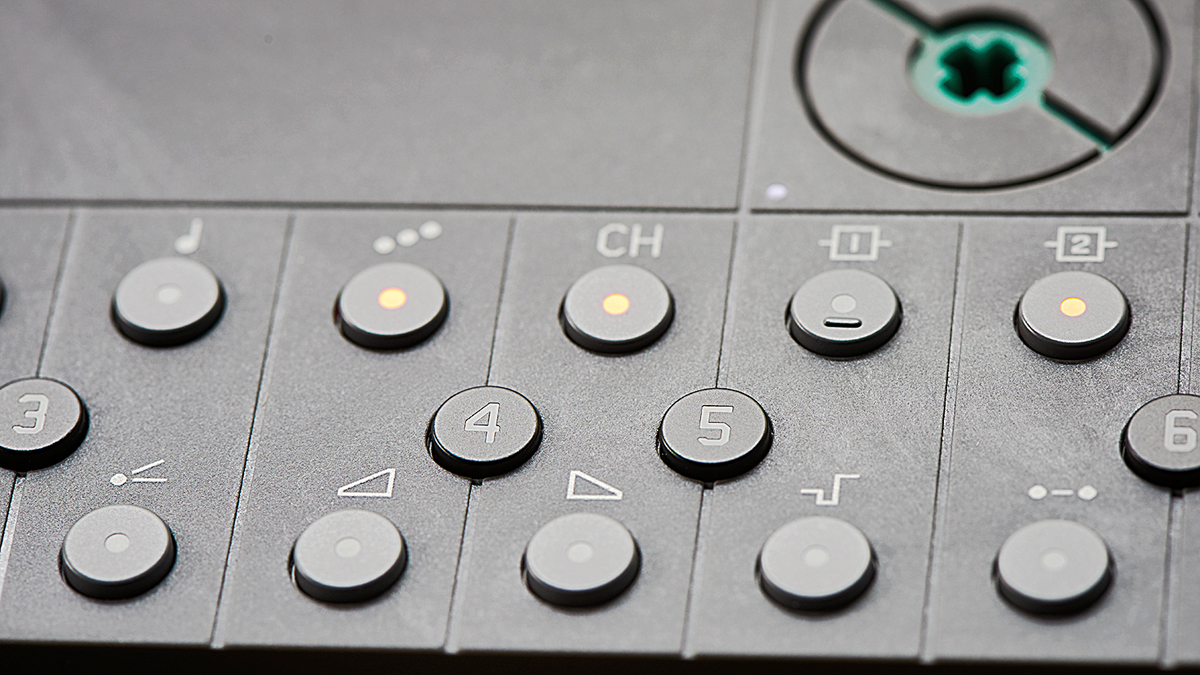
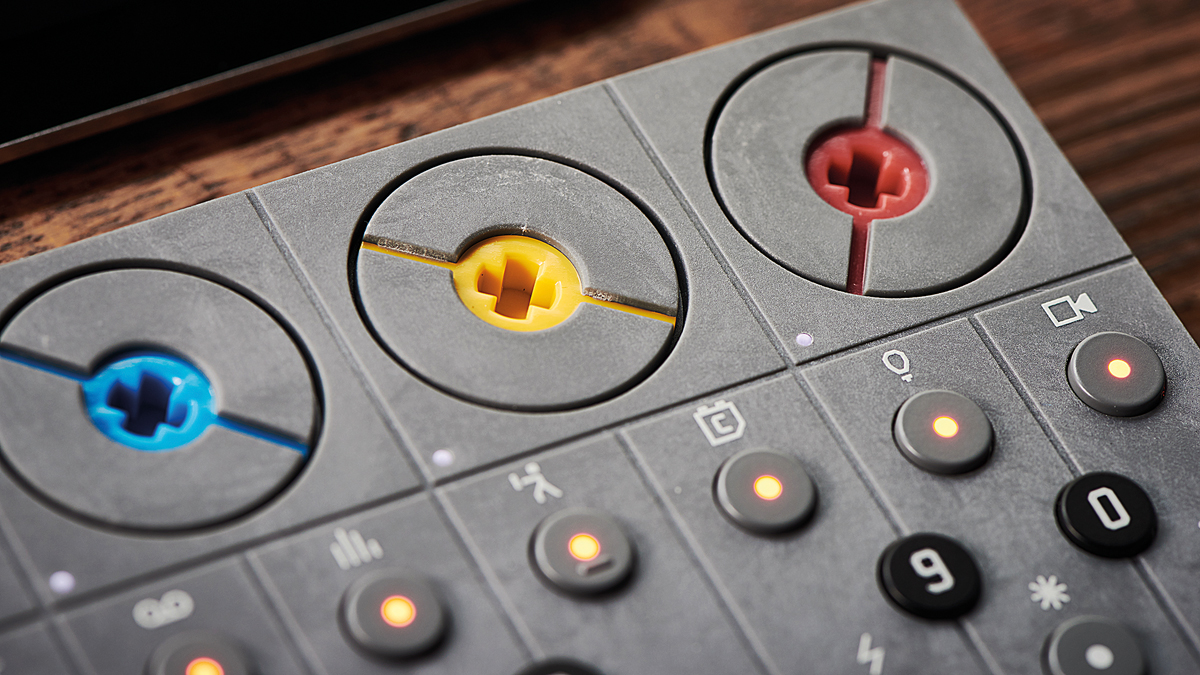
What actually is the OP-Z? A synth? A sampler? An audio-visual sequencer? The reply is, to some extent at to the lowest degree, all of the above. At its cadre the OP-Z has a xvi-rails, 16-step sequencer. Of those tracks, eight generate sound while the other eight are used for effect manipulation and external control. The sound tracks are divided into two groups, with the start 4 set upwards as sample-based drum tracks and the latter as melodic instruments that can each make use of a diverseness of synthesis engines.
Without a screen it'southward difficult to keep rail of things using the hardware alone, but fortunately, TE has created a free command app (currently iOS-but, just forthcoming for Android too). This runs via Bluetooth, and gives full visualisation of the sequencer, audio engines and effects (using some bang-up eye-communicable graphics), and also acts as a screen for the visual sequencers.
A few minor bugbears aside, there'due south a lot we actually similar about the OP-Z. It'south creative and unique, and while some might bewail the reliance on an iOS app, nosotros really enjoy the workflow between the ii devices. The OP-Z is unlike anything else on the marketplace right at present.
Read full Teenage Engineering OP-Z review
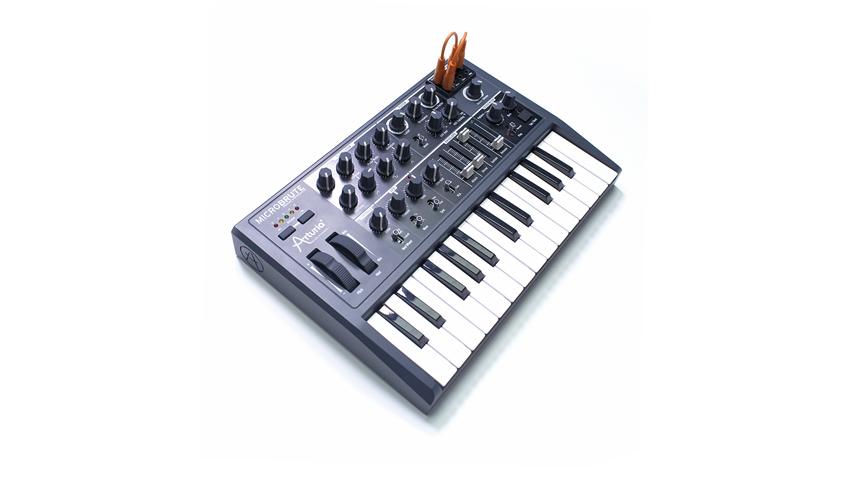


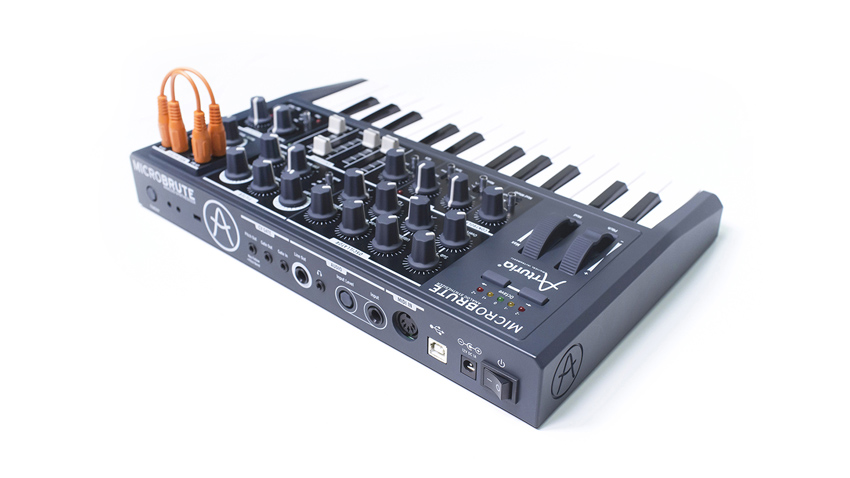
Yes, it'south an even smaller version of the MiniBrute. Like its bigger sibling, it'due south of the unmarried-oscillator, multi-waveform design, but there are fewer controls and mini keys rather than total-size ones. At that place is the bonus of a built-in sequencer, though. The MicroBrute really includes a wider range of CV/Gate interfacing options than the Mini, and the waveform department is more flexible than you might remember.
The Mod Matrix panel enables you to patch the envelope and LFO depth to dissimilar locations using the three.5mm mini-jacks. The MicroBrute packs in far more than you'd have any right to expect for the price. It's non deal-basement, but it definitely offers more than many of the 'pocket synths' that don't toll too much less. A fine counterpart monosynth that'south both compact and affordable.
Read full Arturia MicroBrute review

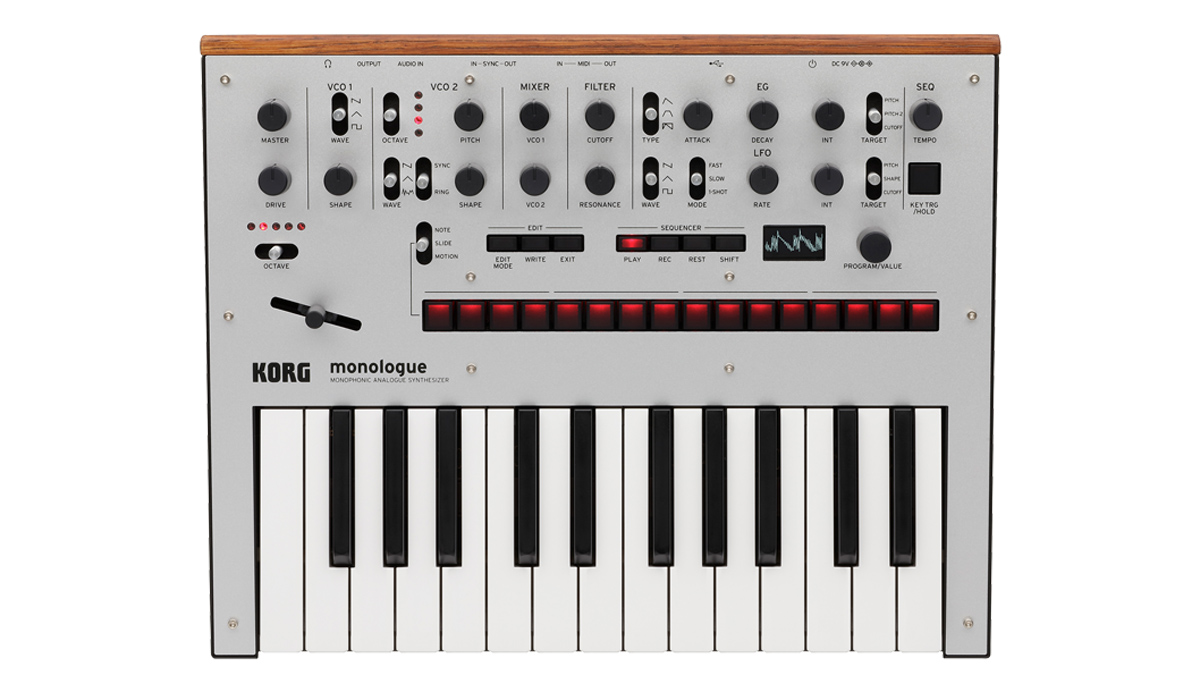
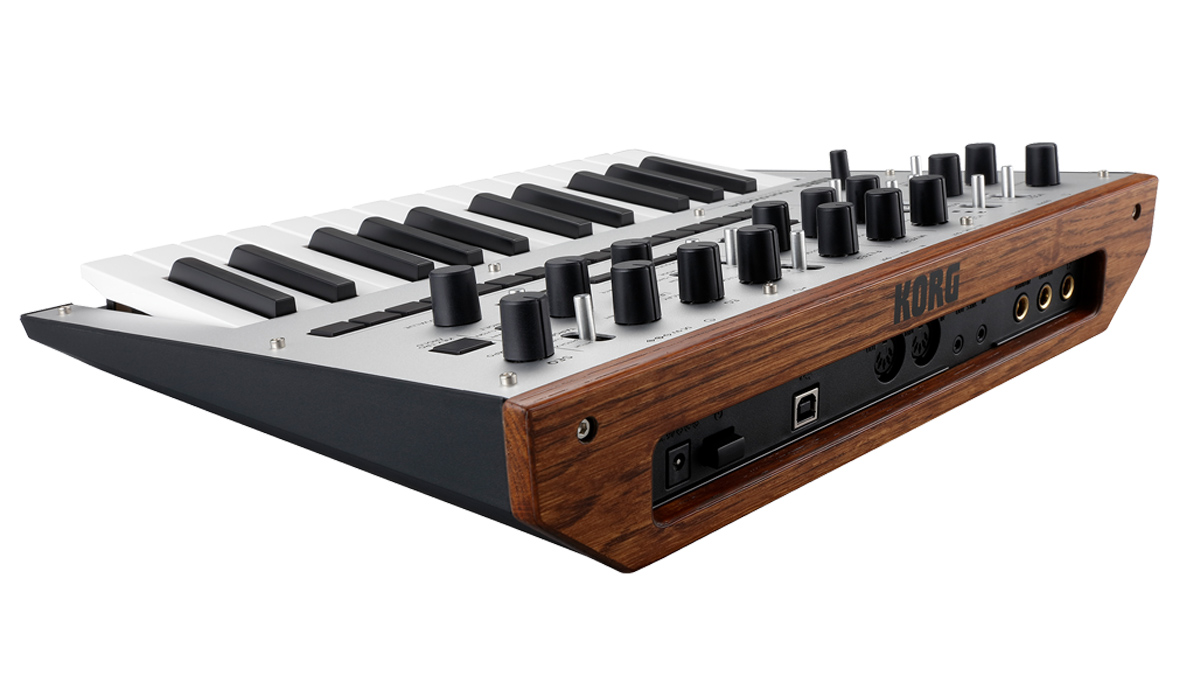
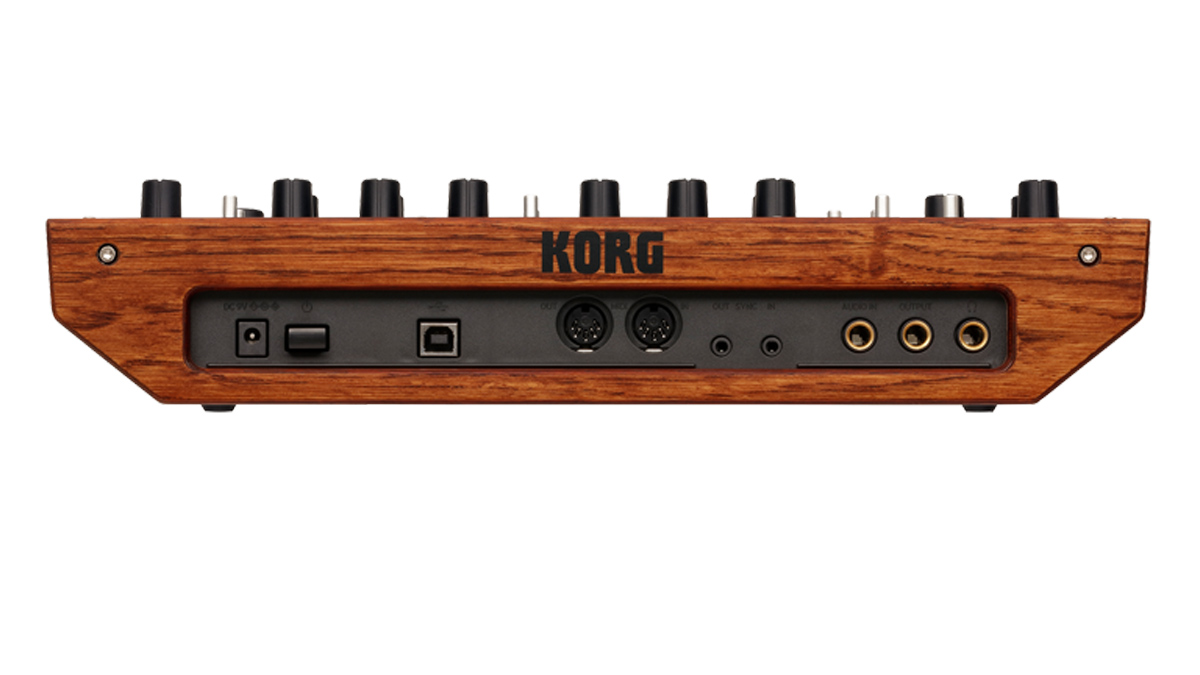
This isn't simply a monophonic version of the Minilogue, though there is a family resemblance (a real wood back panel, mini keys and the same fix of inputs and outputs). This fourth dimension, though, nosotros have a smaller (and lighter) footprint, with an octave taken off the keyboard and portability enhanced by the option of battery power.
The synth architecture is relatively conventional, but there are some clever functional tricks which extend its range. There'due south an enhanced step sequencer, which enables you to record in existent or footstep time. 16 concrete buttons are designed for quick editing and improvisation, while the movements of up to four knobs can be captured with the motion sequence function.
At that place's a drive circuit to add overtones and distortion and, on a more esoteric level, support for microtuning. The Monologue is great for anyone who wants a cheap and cheerful yet powerful synth, and one that offers a surprising amount of flexibility.
Read full Korg Monologue review
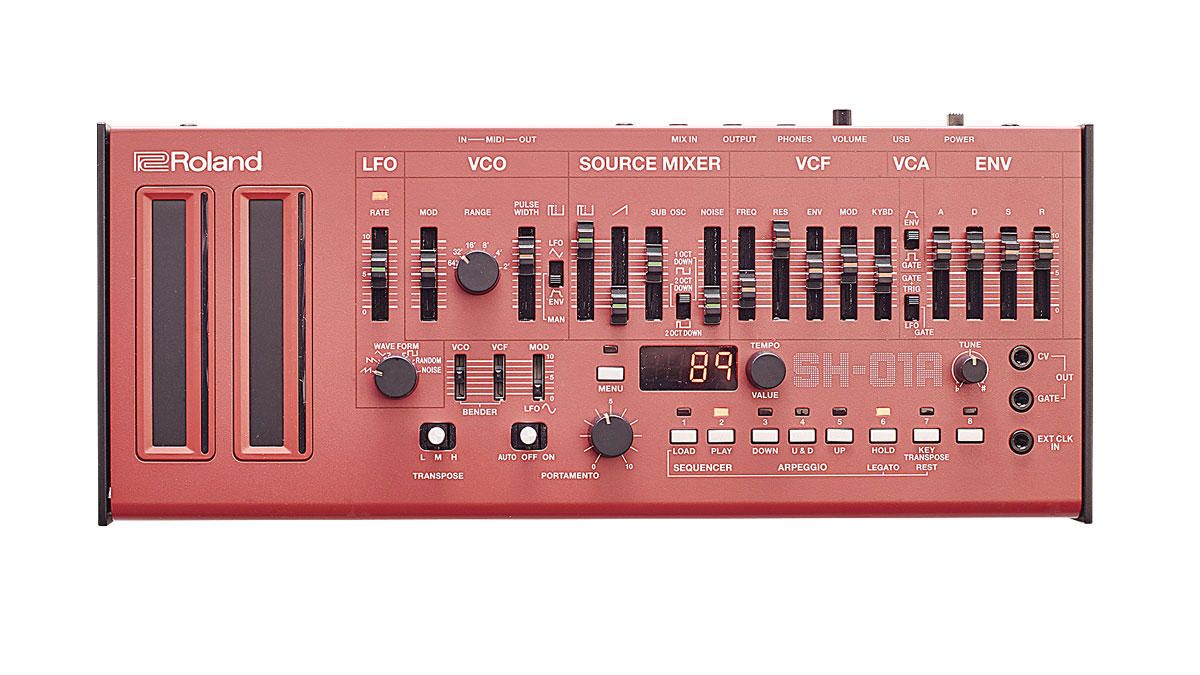

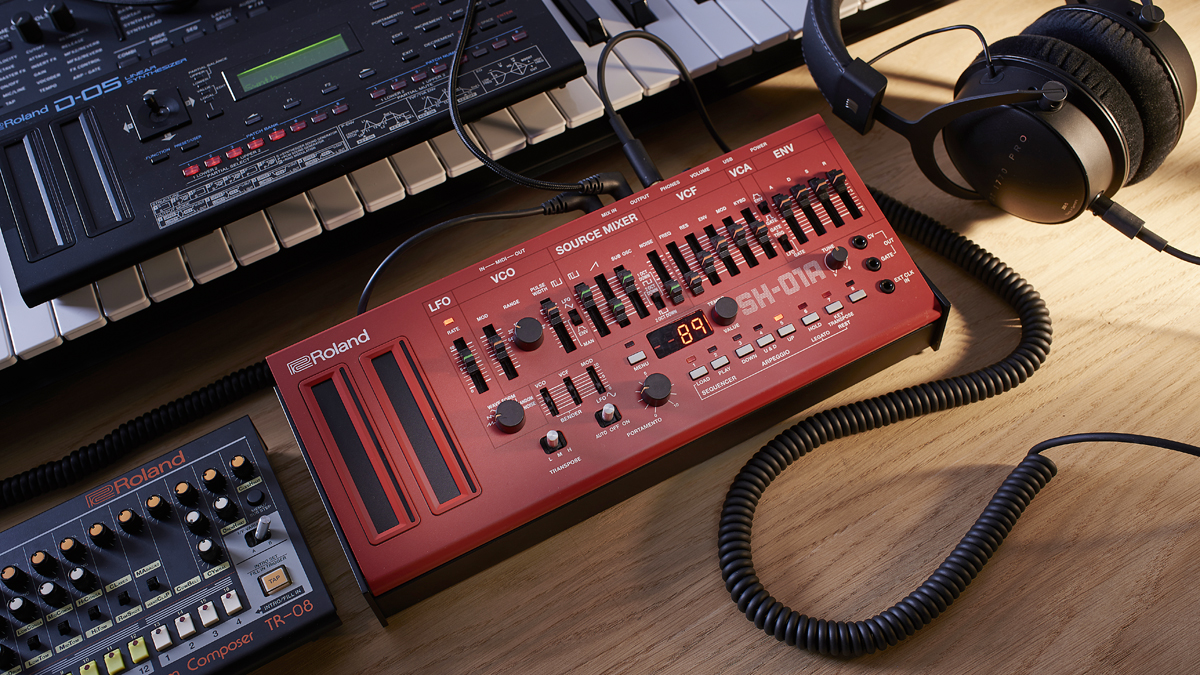
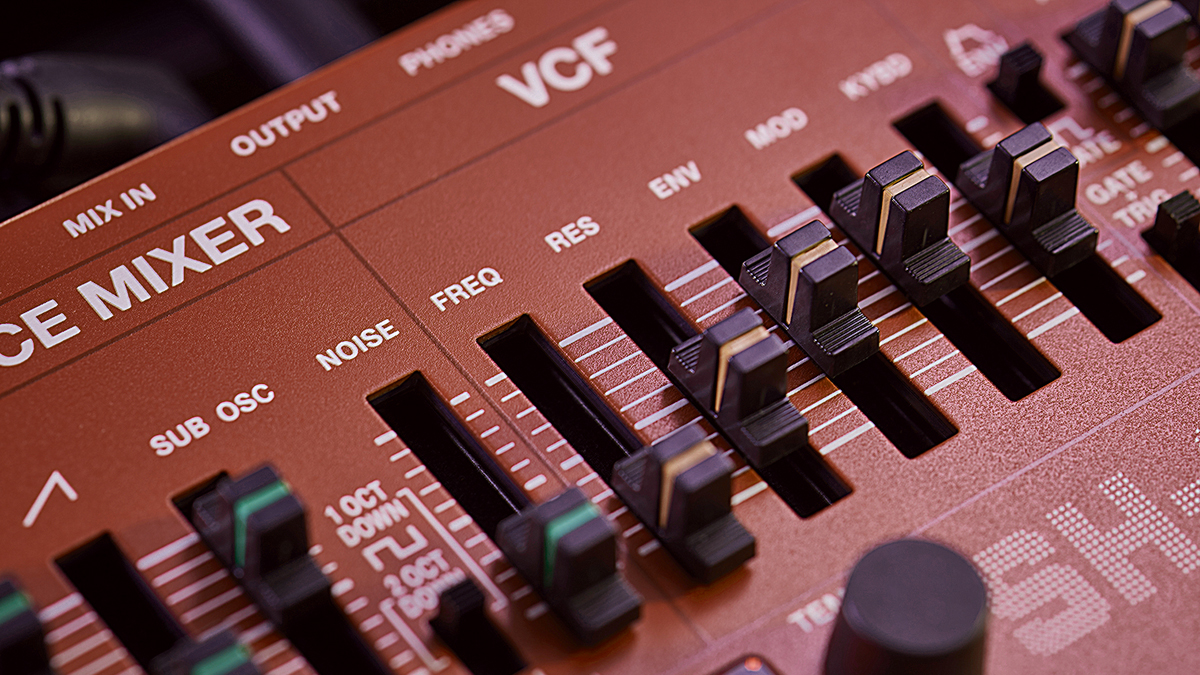
Roland's SH-101, introduced in 1982, was a small, plastic, 32-cardinal monosynth with a uncomplicated architecture that provided direct easily-on control and no preset memories. This emulation - which goes past the name of the SH-01A and is available in the iconic red, bluish and greyness - uses Roland's ACB technology to evangelize those classic SH bass, pb, noise and FX sounds, while adding Unison, Chord and four-phonation Polyphonic modes to give y'all extra flexibility across simply monophonic operation. Improvements have likewise been made to the sequencer, which can now shop and call back up to 64 patterns, and in that location's an arpeggiator, too.
CV/Gate output enables yous to control modular and vintage gear, in that location are multiple sync options (MIDI, MIDI over USB, LFO clock and trigger input) and you lot can store up to 64 presets. The SH-01A is a fun and engaging synth, and when compared to a 'real' SH-101 stands upwards very well. If you must take 100% analogue, then this isn't for you lot, but if you have an open mind, you might be pleasantly surprised.
Read full Roland SH-01A review


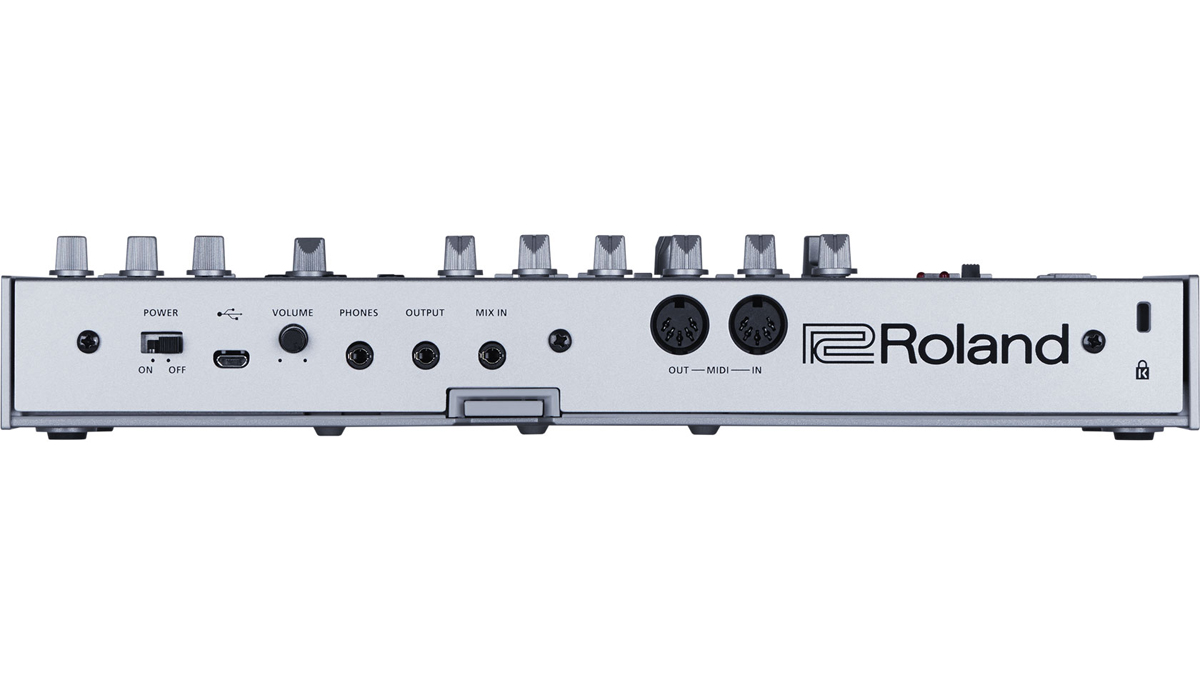
The TB-03 is an ACB-powered clone of Roland'south archetype TB-303 Bass Line synth, and borrows its inspiration's look and feel. At that place'south a 4-digit display, and yous can go hands on using the tuning, cutoff, resonance, envelope mod, decay, and accent knobs. Both saw and square waveforms are included and there are overdrive, reverb and delay effects.
The original 303's Pitch and Time write modes are joined by a new Pace mode on the TB-03, and yous besides get fine tempo control. You tin switch between modes while sequences are playing, and there'due south a dedicated trigger input to drive the internal sequencer. MIDI I/O, USB and CV/Gate ports are also here. The TB-03 captures the essence of the original 303 and adds a twist.
Some might argue that Roland could have gone farther in updating the sequencer and interface - and others will moan that it's not counterpart - but if y'all want an convincing and affordable 303 clone, hither it is.
Read full Roland TB-03 review
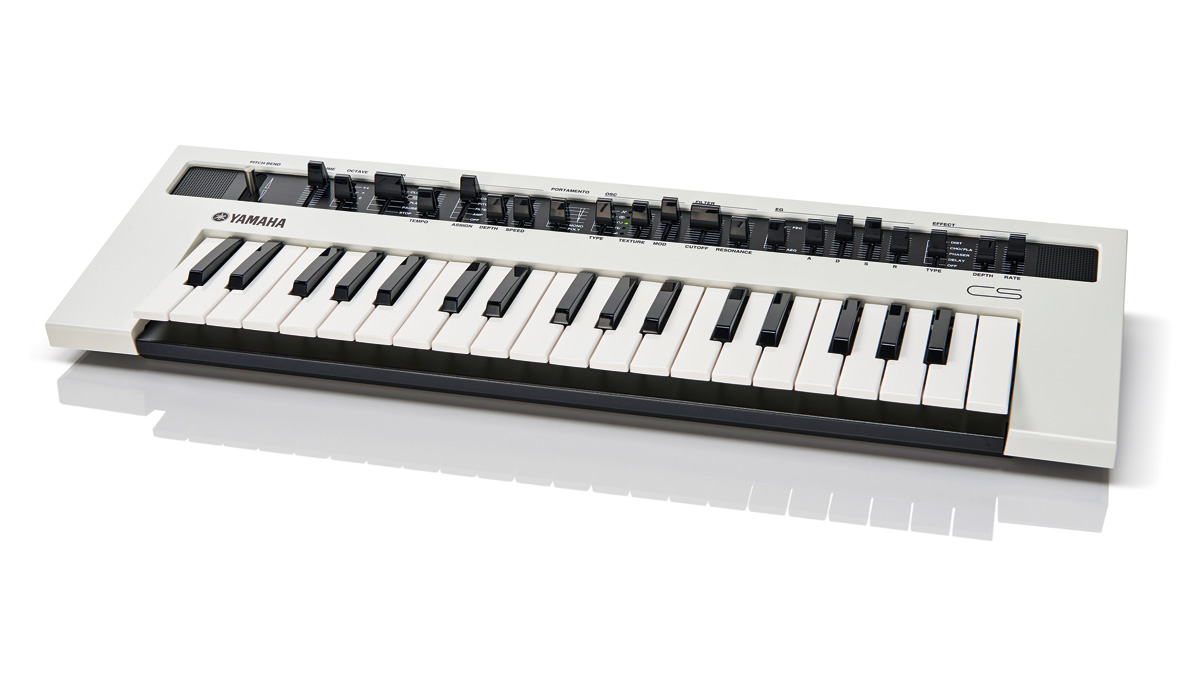
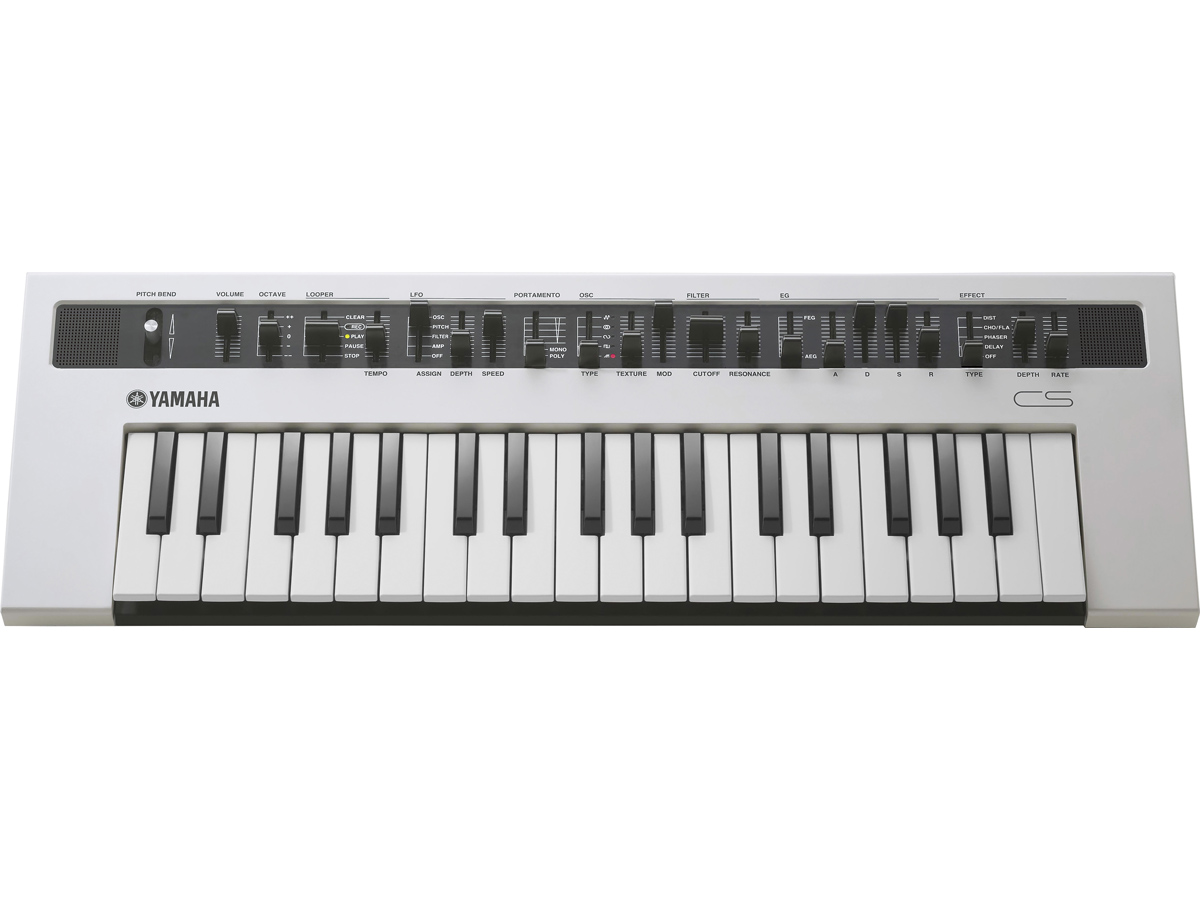
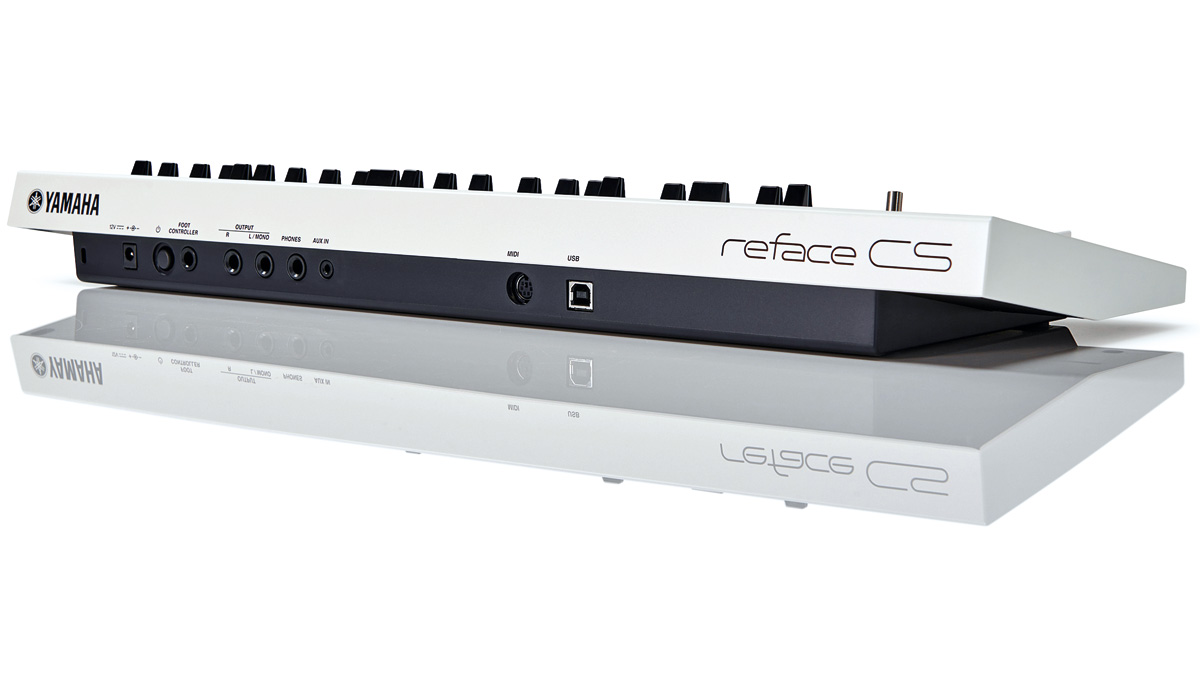

Introduced in 1976, and used by everyone from Stevie Wonder to Vangelis, Yamaha's CS-80 has become one of the almost desirable vintage synths of all time. In many means, the compact and lightweight Reface CS couldn't be more than different (the CS-80 weighed more than than 200lbs), just its five oscillator types (multi saw, pulse, oscillator sync, band modulation and frequency modulation) enable you to create an incredible range of sounds, and the instrument can produce both analogue-style and digital tones.
The Reface CS is powered past an 'analogue physical modelling' engine, has a uncomplicated, slider-centric control prepare, comes with a phrase looper and offers 8 notes of polyphony. While looking simple, is actually way greater than the sum of its parts, and both addictive and inspiring to utilise.
Read full review: Yamaha Reface CS review
All-time cheap synthesizer: Buying advice

What should I look for in a cheap synth?
The ascent in affordable synths has fabricated hardware instruments considerably more than accessible to newer and less experienced producers. Many people find themselves wanting to interact with something physical, rather than simply tweaking the settings of a DAW, which makes hardware synths bonny. Non to mention they sound keen, too. However, while the toll is less daunting, some of the terminology tin can still make choosing a synthesizer feel quite intimidating.
Practise I want an analogue synth?
One of the nearly mutual distinctions you'll come up beyond is that of 'counterpart' vs 'digital' – meaning whether a synth is powered by 'real' electronic circuitry or some form of digital bespeak processing (DSP). While in that location are enough of people out in that location who will claim that analogue automatically equals 'better', in reality this isn't e'er the case. Trust your own ears.
On the whole though, it'southward off-white to say that synths powered by analogue engines or virtual analogue - digital tech replicating the behaviour of a real circuit - are better for classic and vintage sounds, while digital synths can often create weirder, more unusual tones.
Practice I want a digital synth?
Digital synths volition likely sound 'cleaner' compared to analogue synths that ofttimes generate a certain amount of unpredictability and natural saturation – both of which qualities are a major part of their enduring popularity. Some of the best inexpensive synths in this circular-up take a 'best of both' approach, combining elements of analogue sounds with powerful digital elements.
Another term to expect out for is polyphony, meaning how many notes a synth can play simultaneously. A polyphonic synth tin can play multiple notes via distinct synth 'voices', eg. a iv-voice synth allows yous to effectively play up-to four instances of the same synth sound at once to generate a chord. A monophonic synth, on the other hand, merely has one voice available.
What's a paraphonic synth?
Slightly less common are paraphonic synths, which sit somewhere in betwixt – these let multiple notes to be played by dividing the oscillators inside a single synth voice. The result isn't quite the same as true polyphony, as individual notes will share a filter and amp envelope, however information technology does open up the possibility of playing certain chords or patterns that a monosynth wouldn't exist capable of.
Having more voices will always mean more than flexibility, although monosynths ofttimes pack more of a dial when information technology comes to weight and dust. For leads, basslines, percussion or FX, a mono or paraphonic synth may be the way to go.
- Bigger budget? These are the all-time sythesizers overall
- Explore the best semi-modular synths
- Our pick of the best cheap MIDI keyboards
- Create for less with the best upkeep laptops for music production
0 Response to "Buy a Cheap Bass and Upgrade the Hardware"
Post a Comment